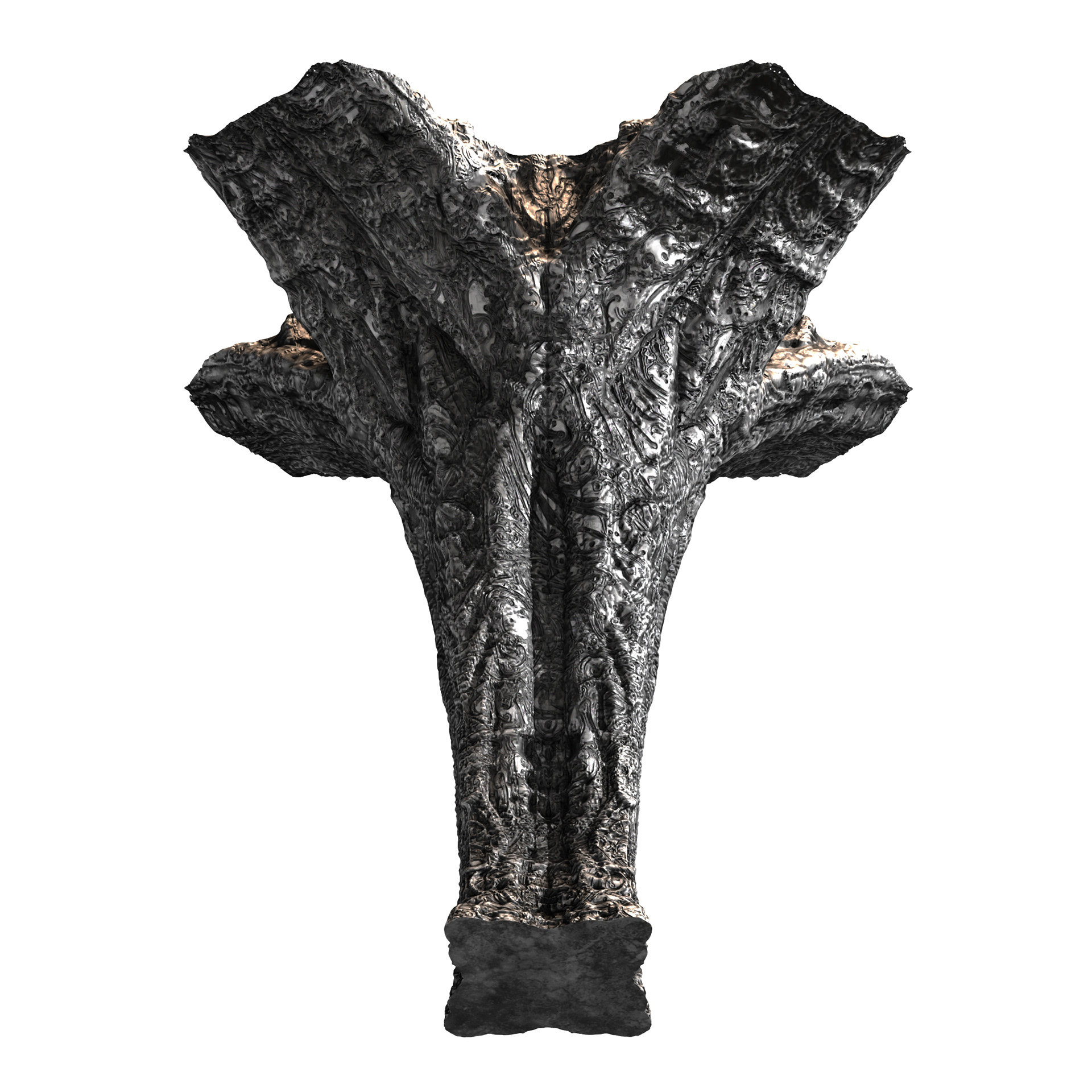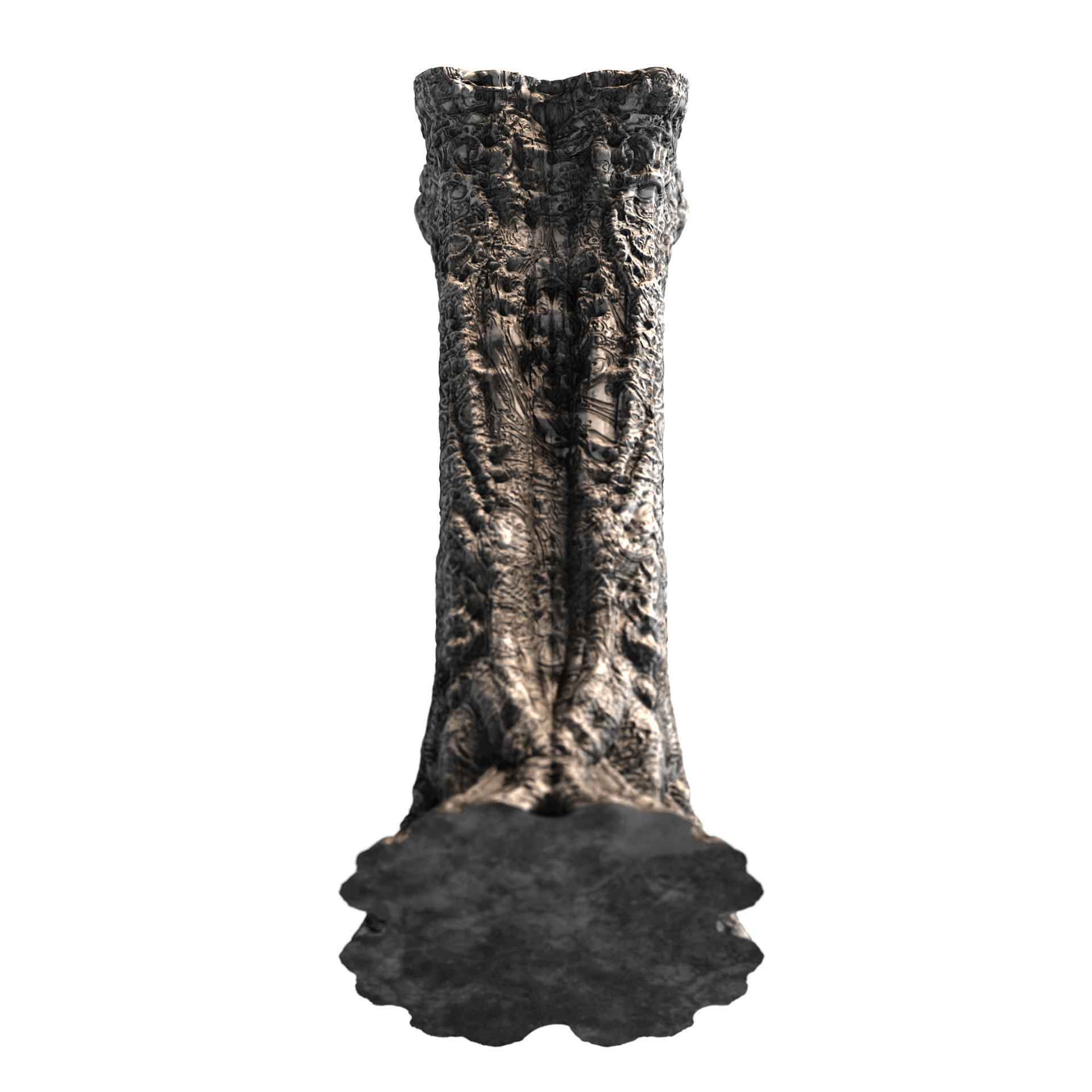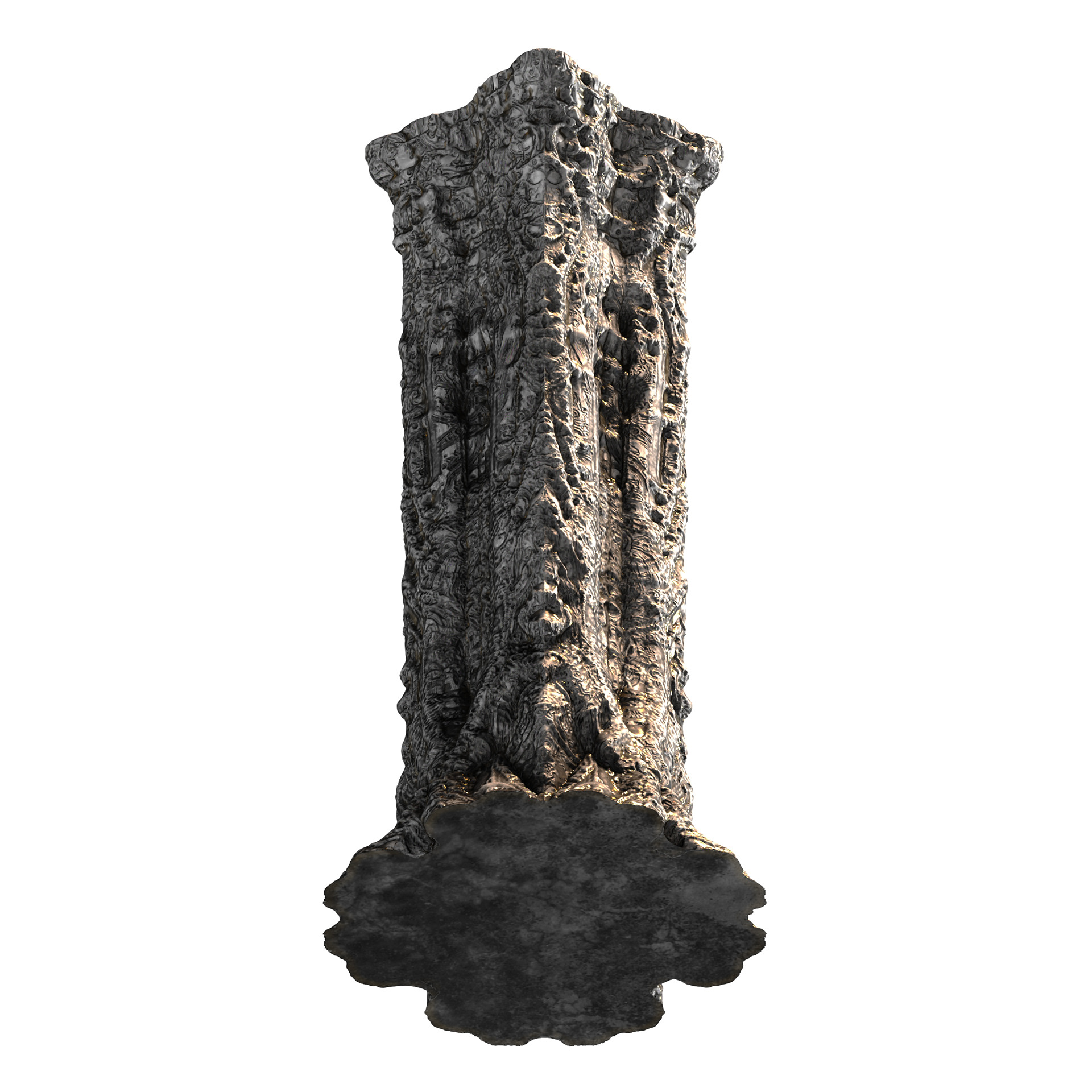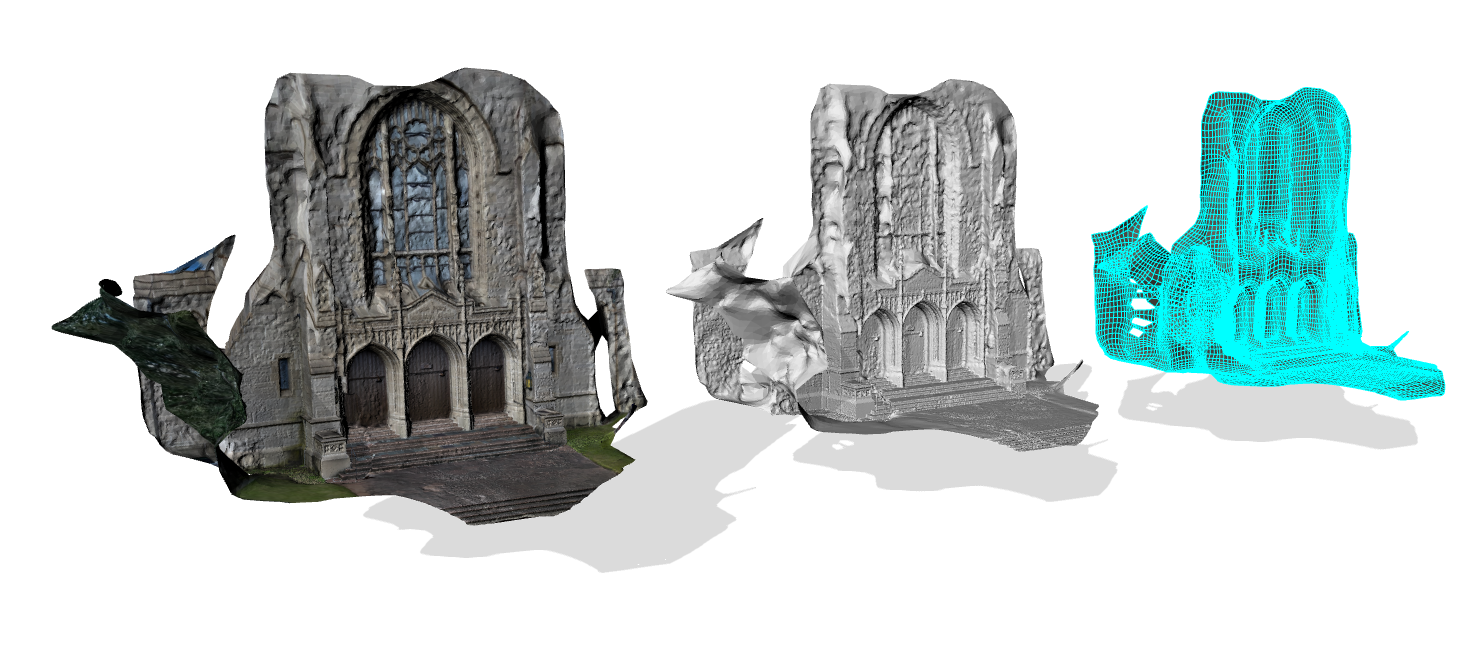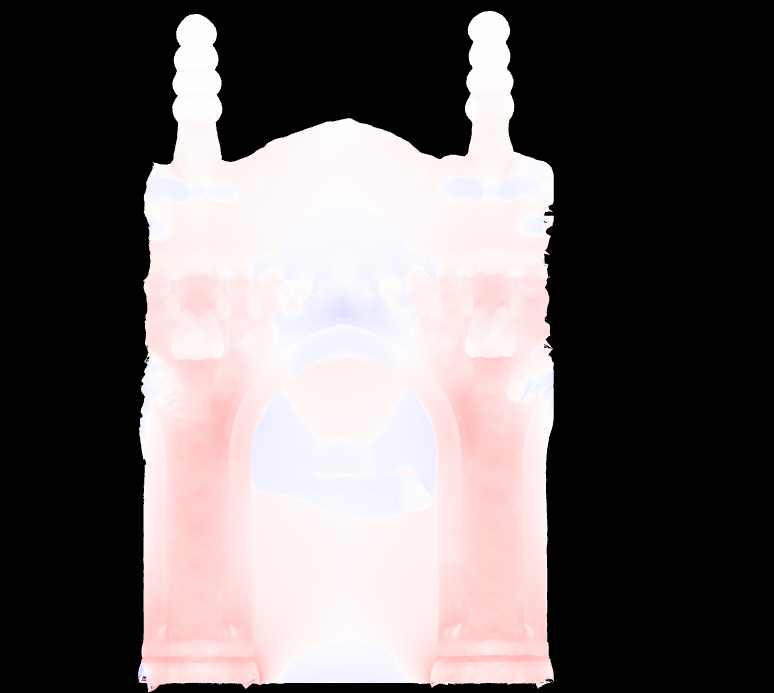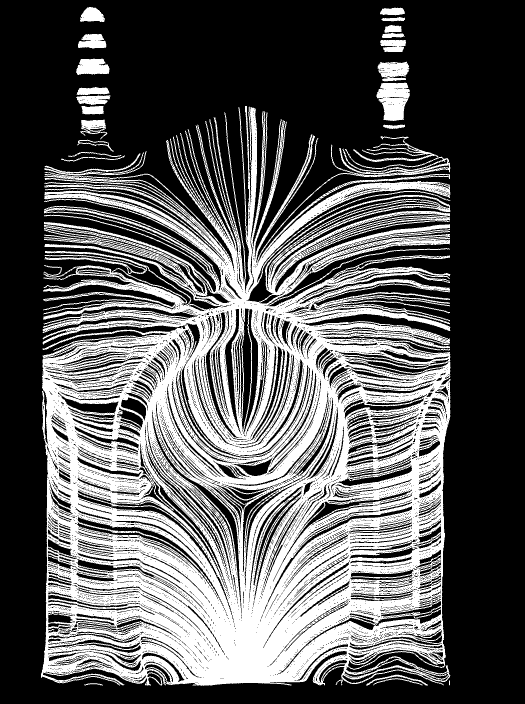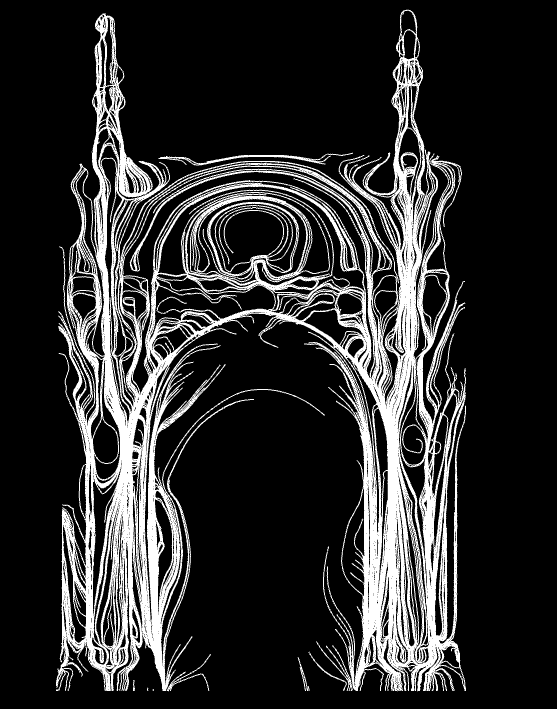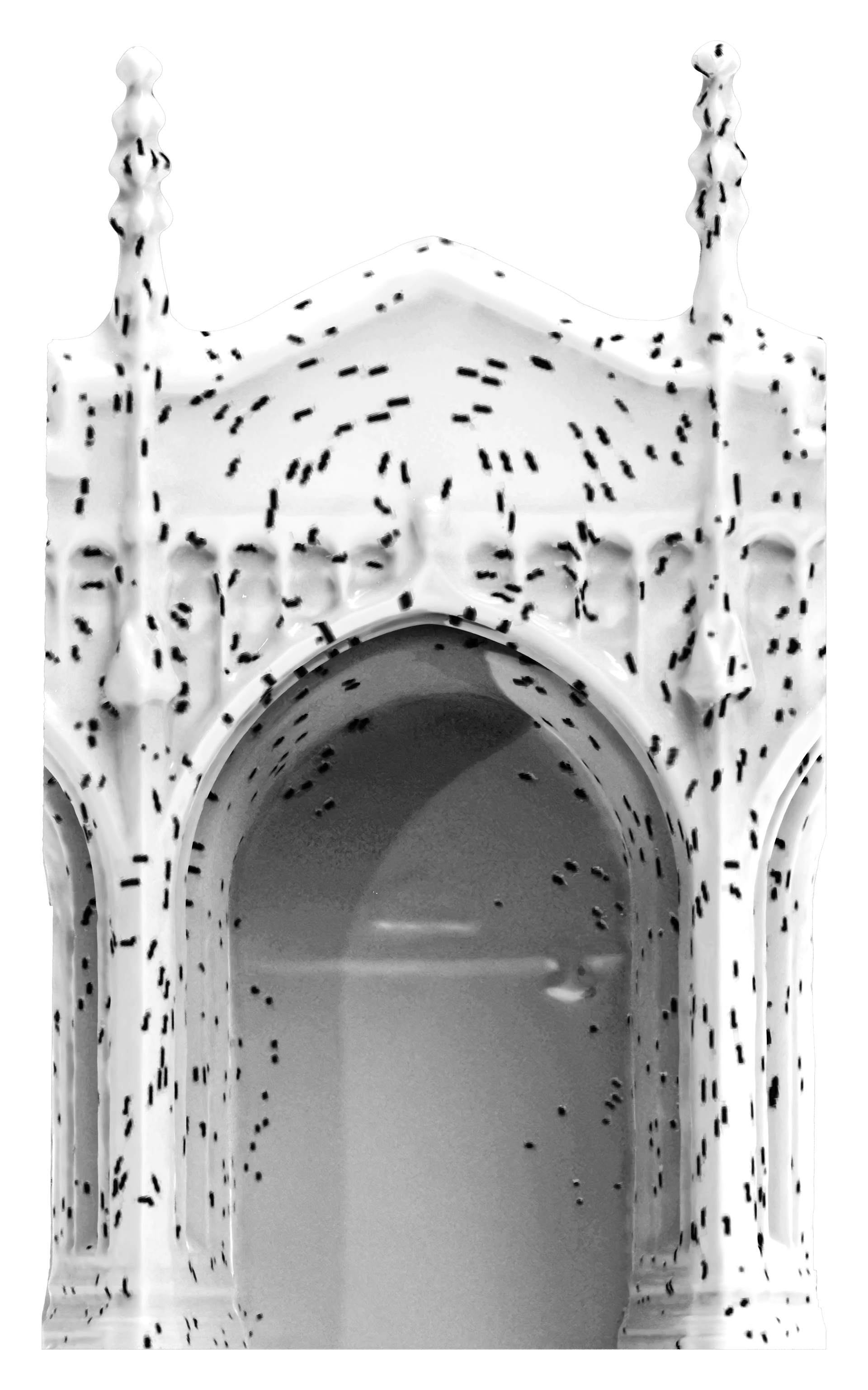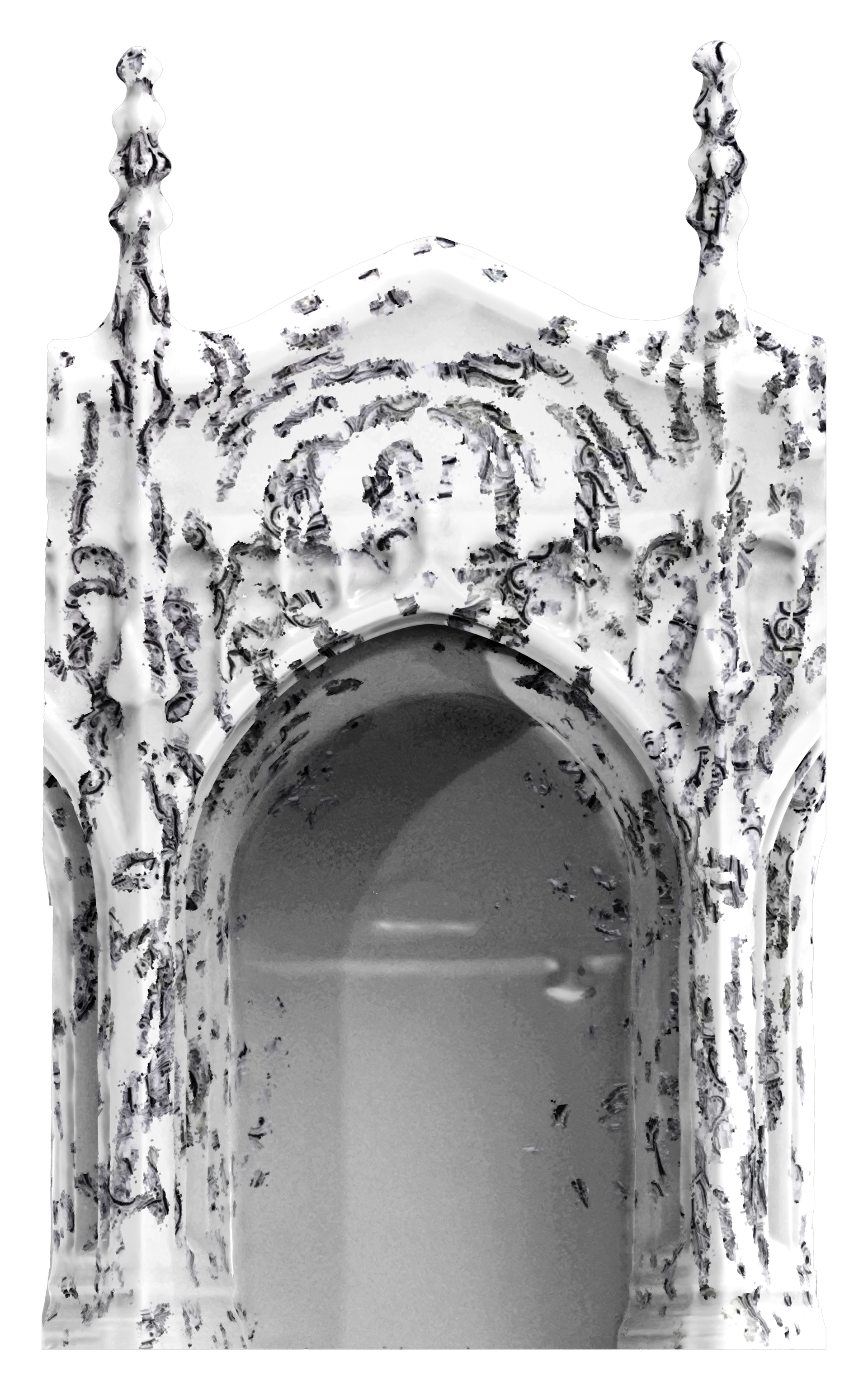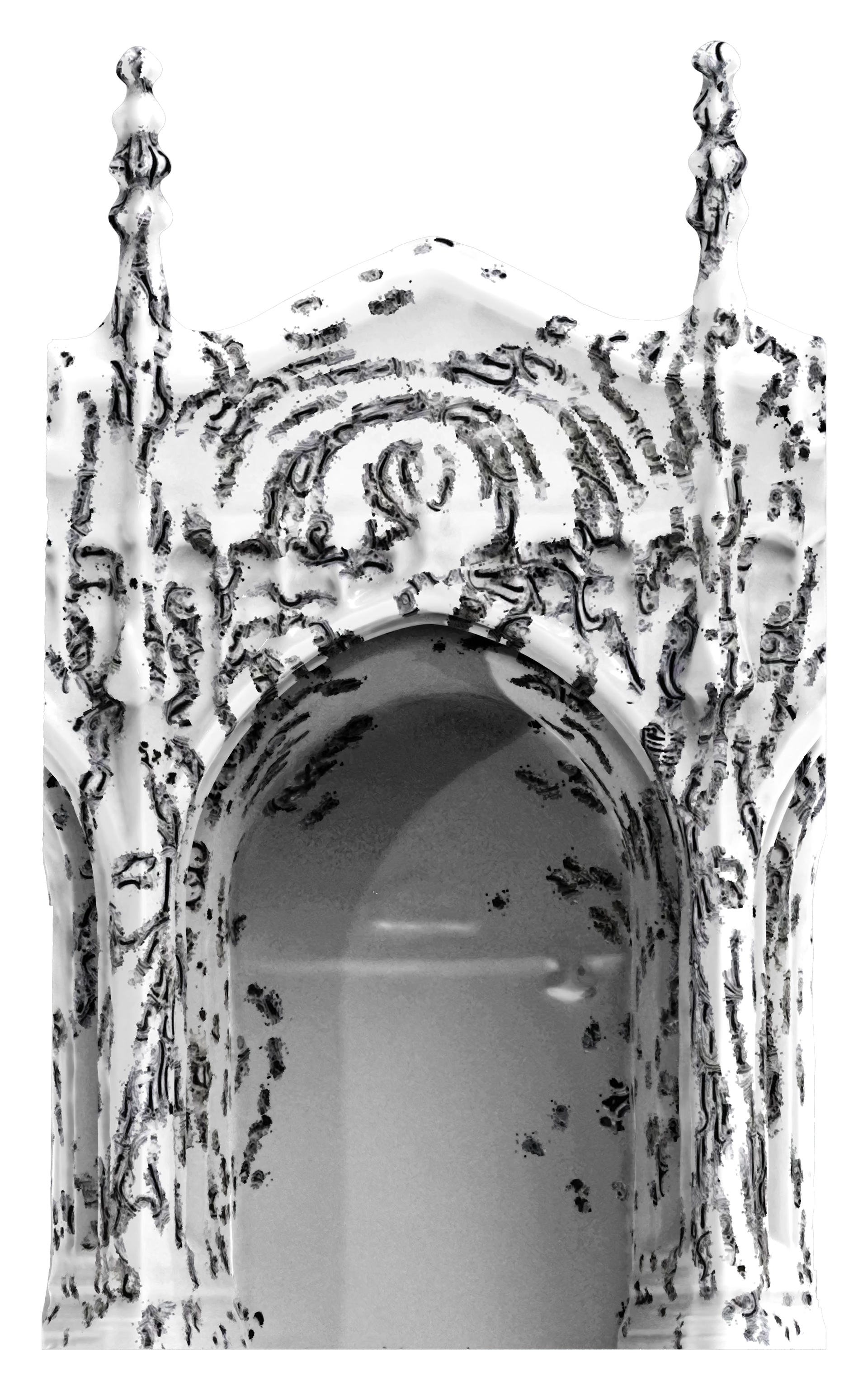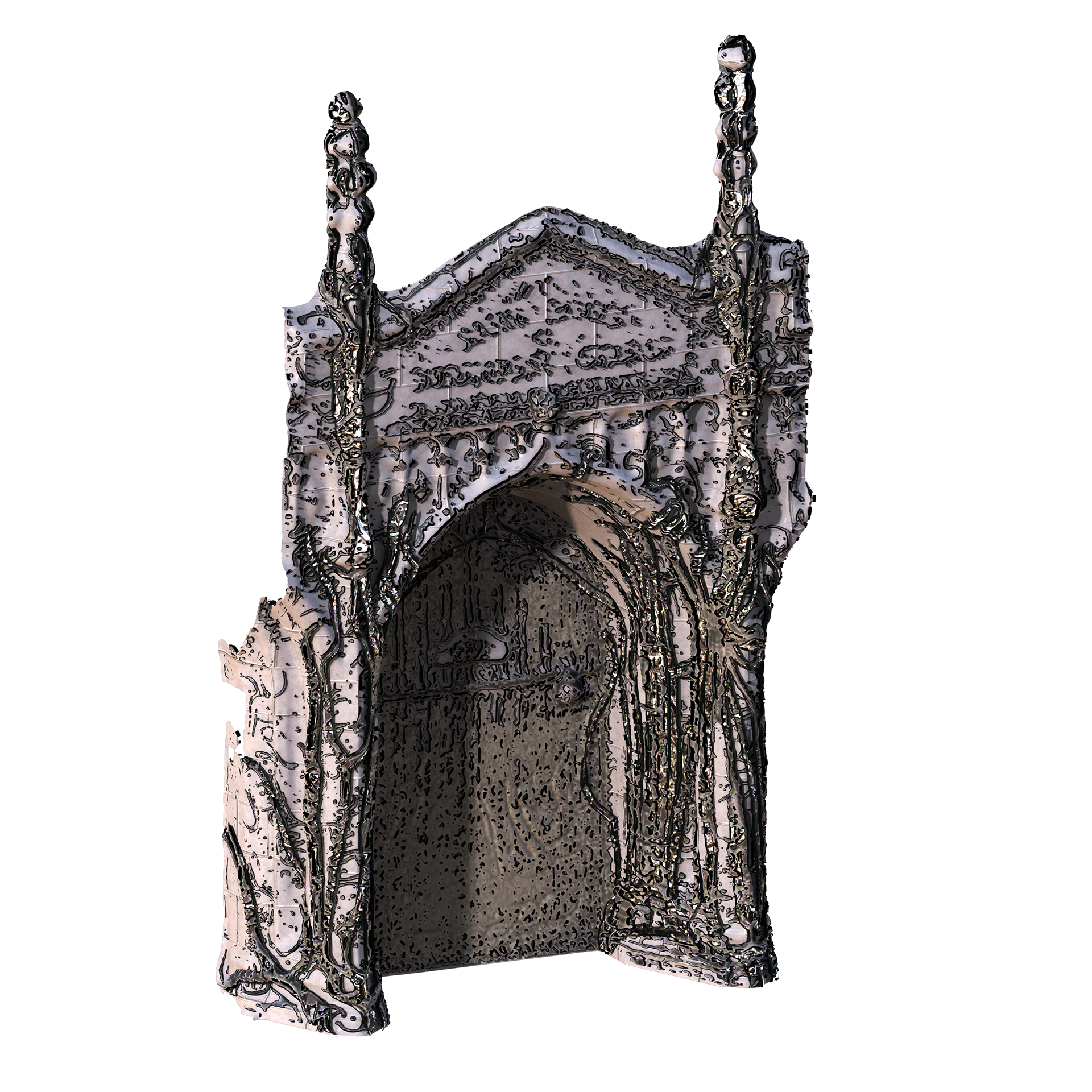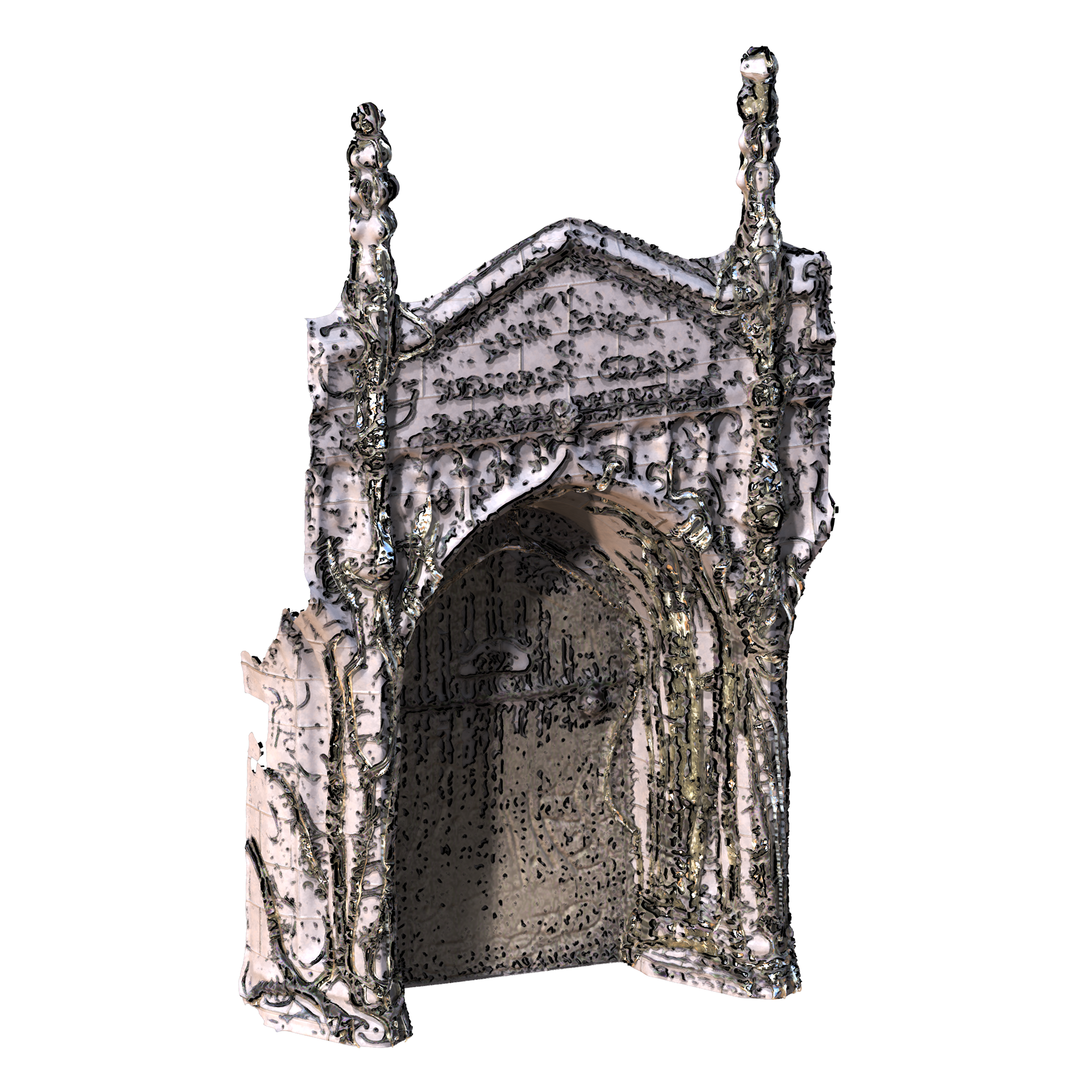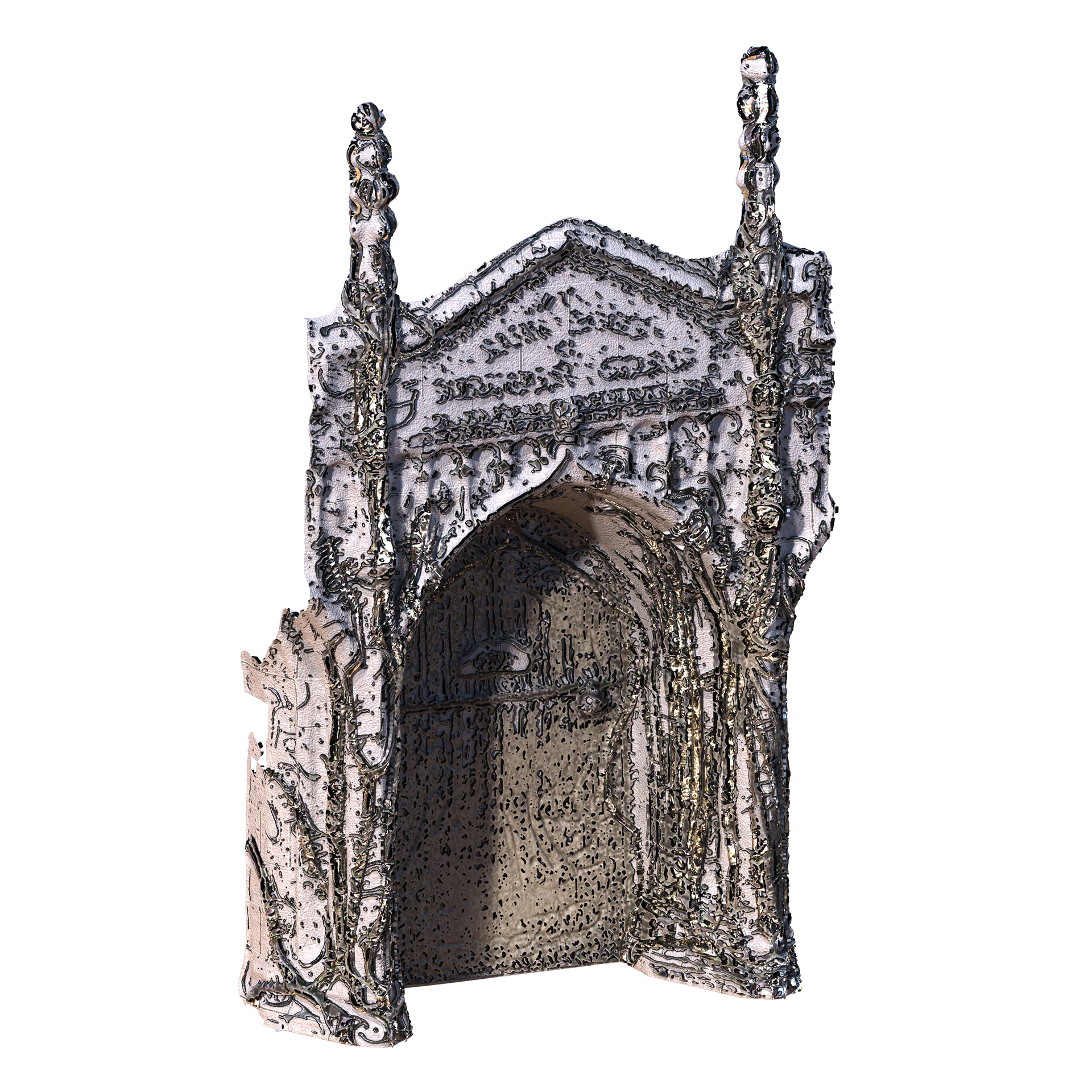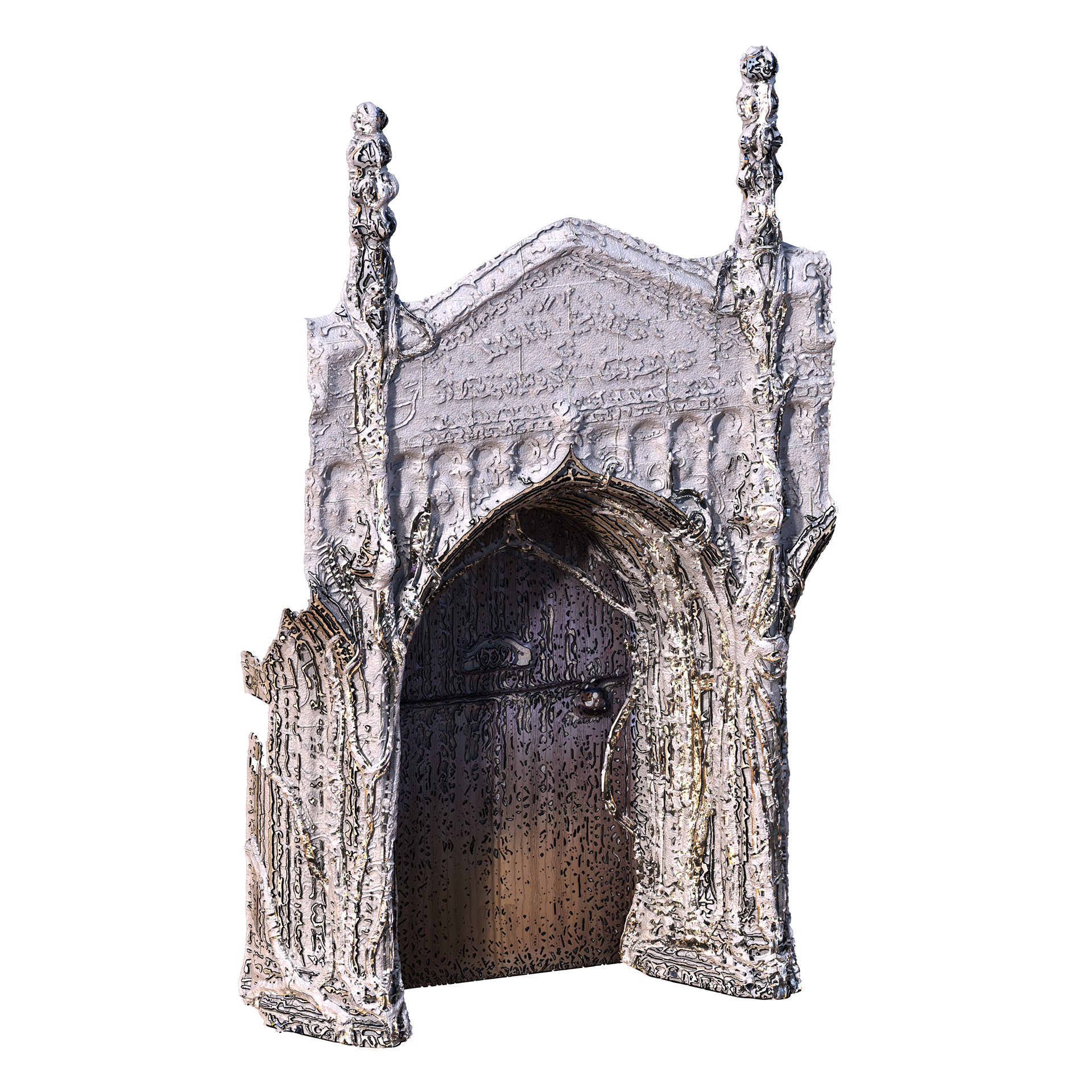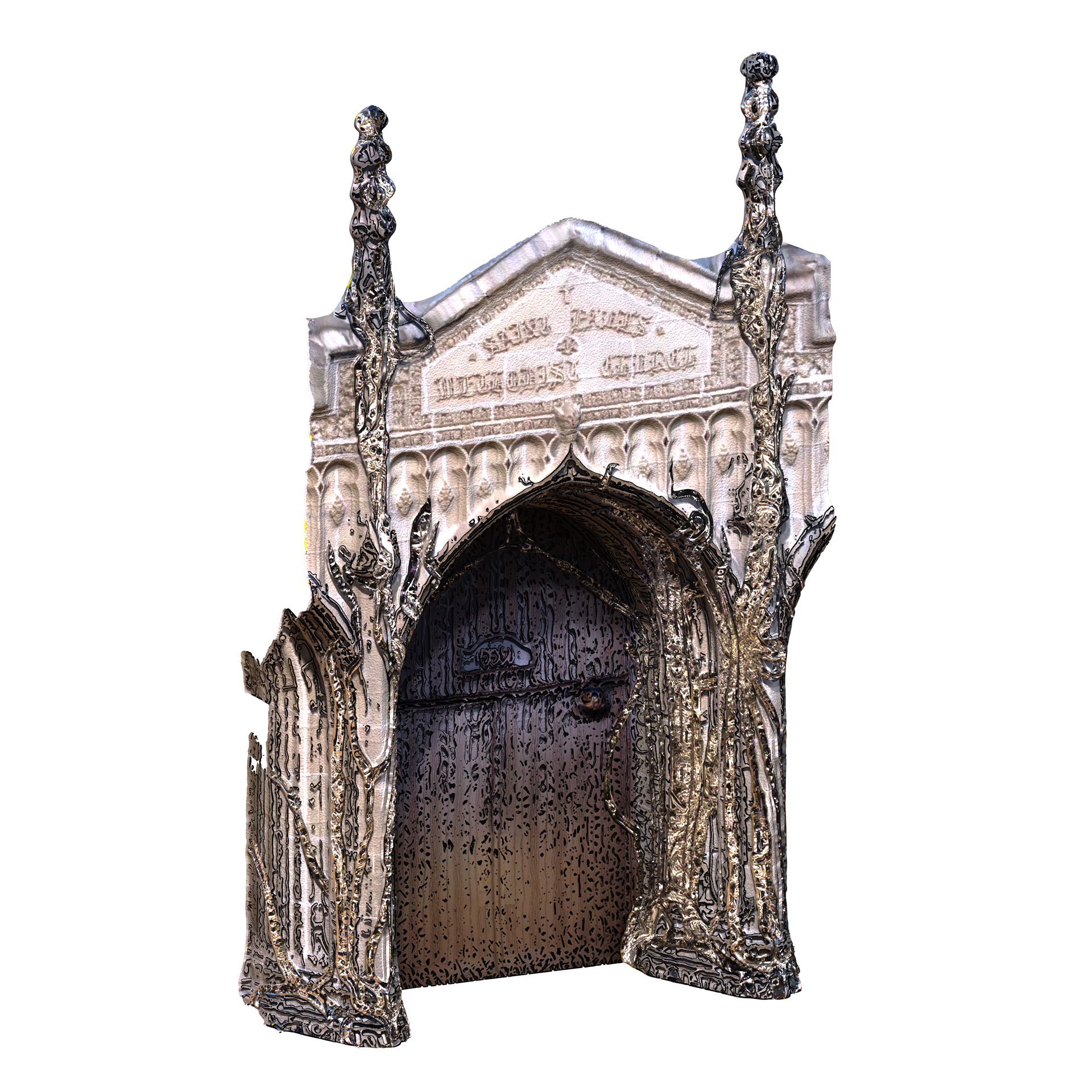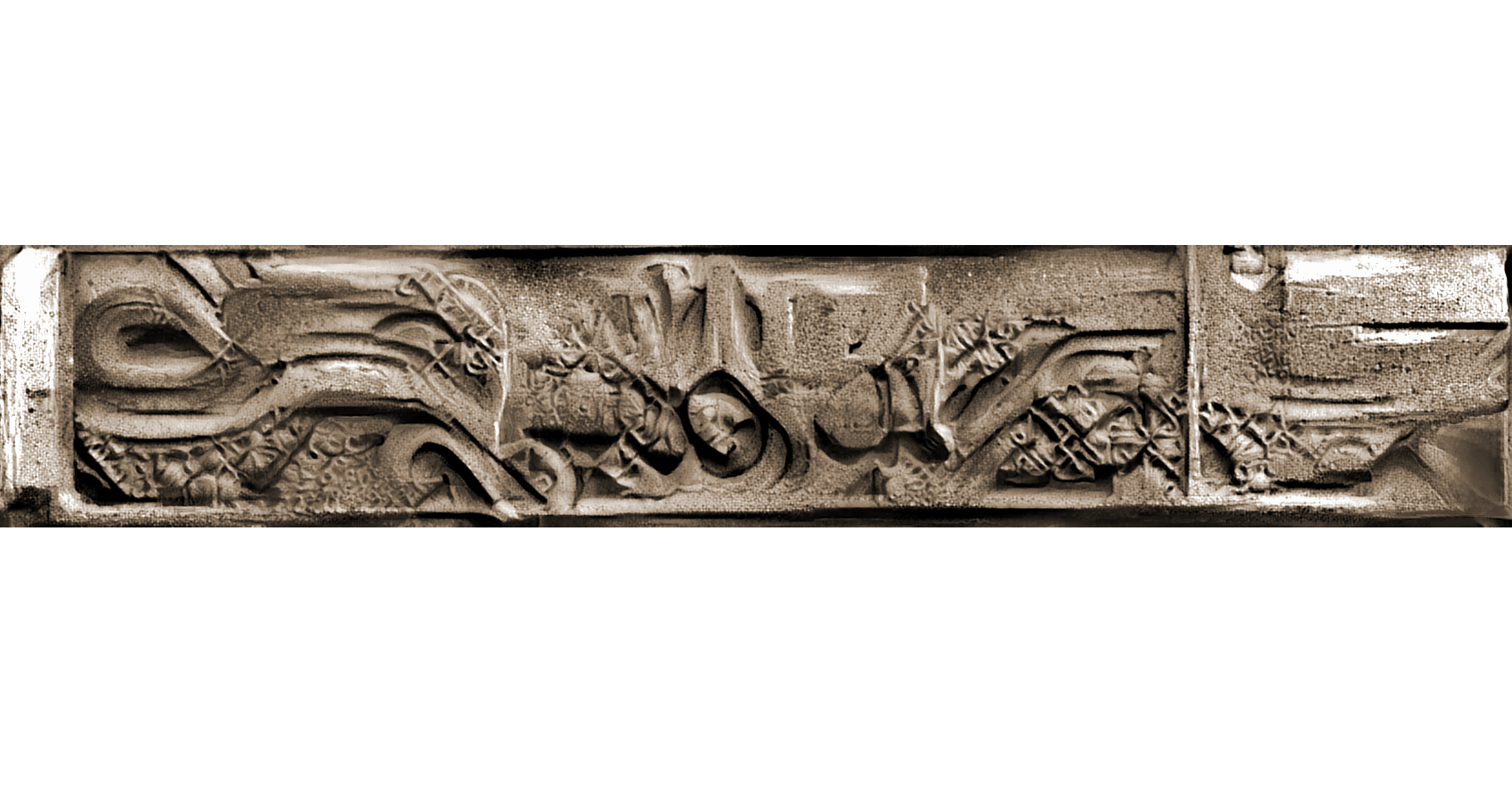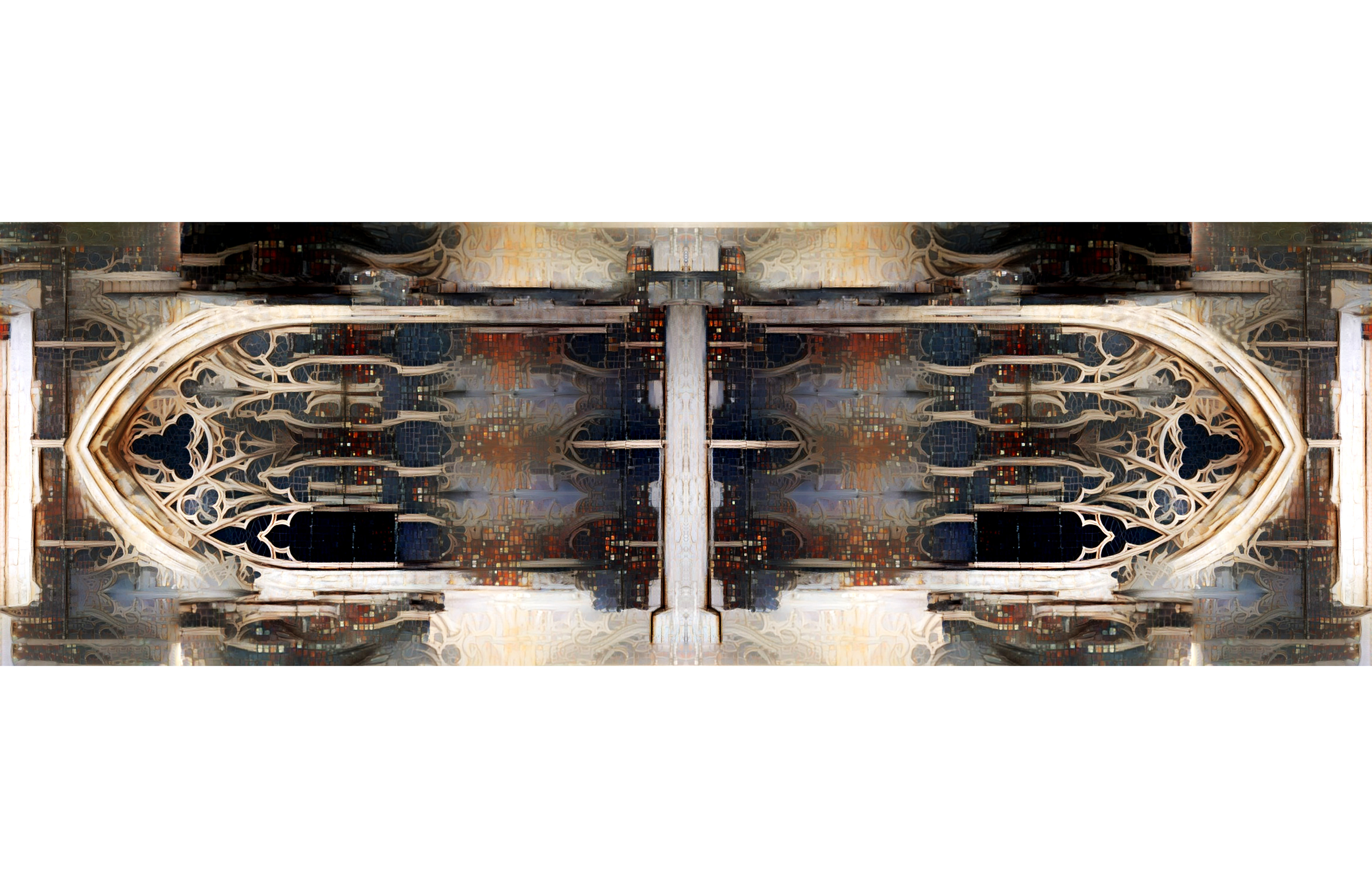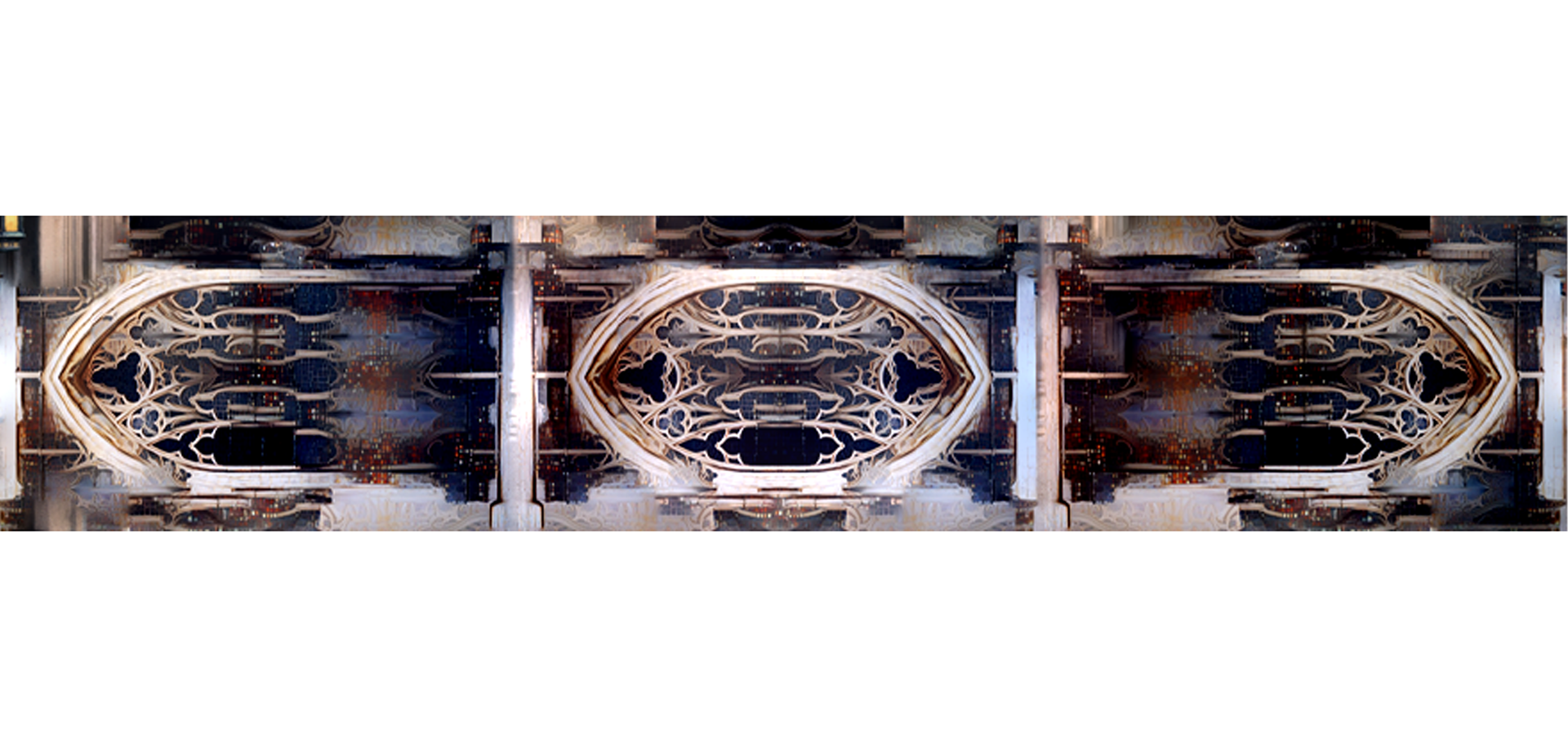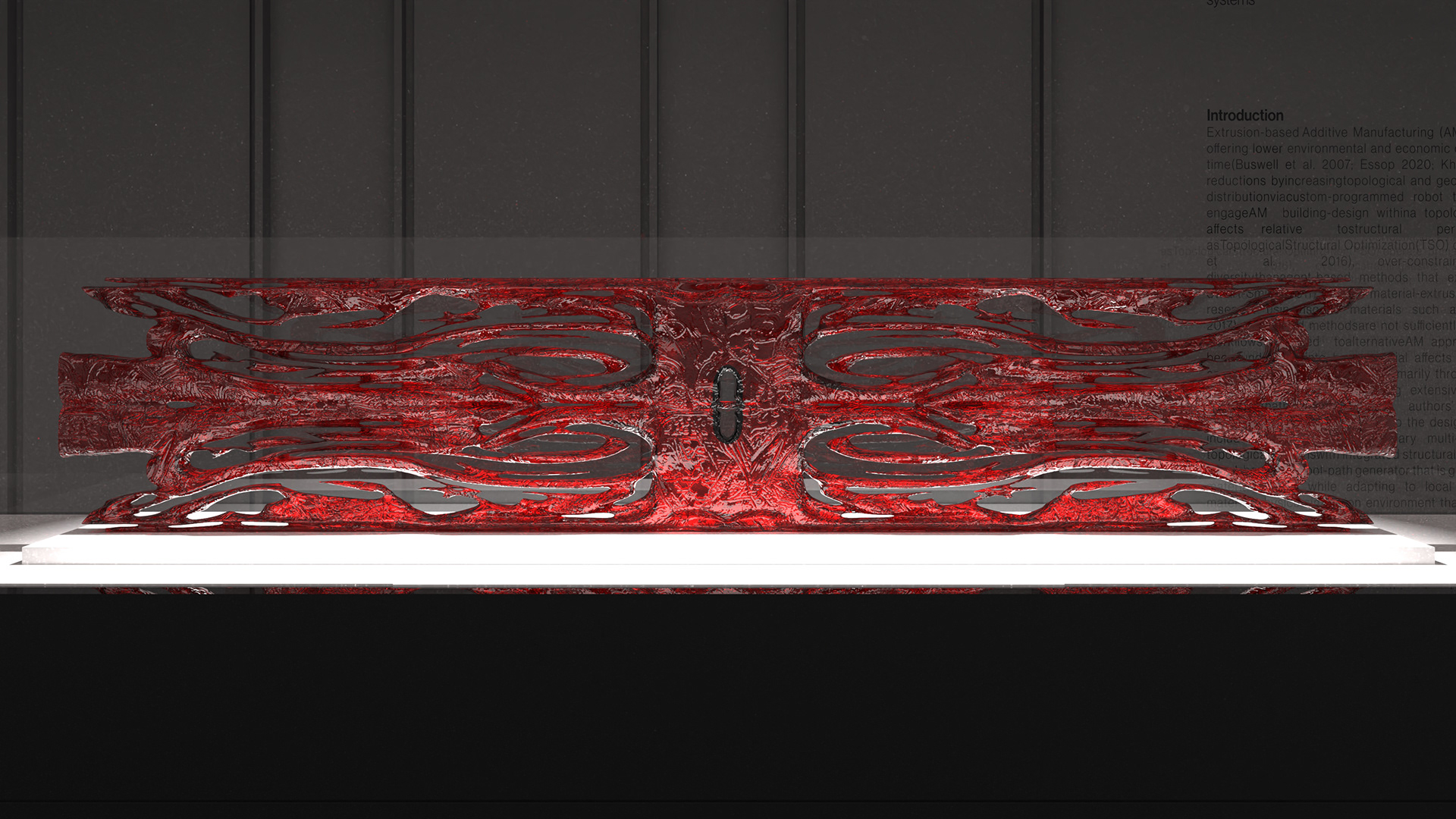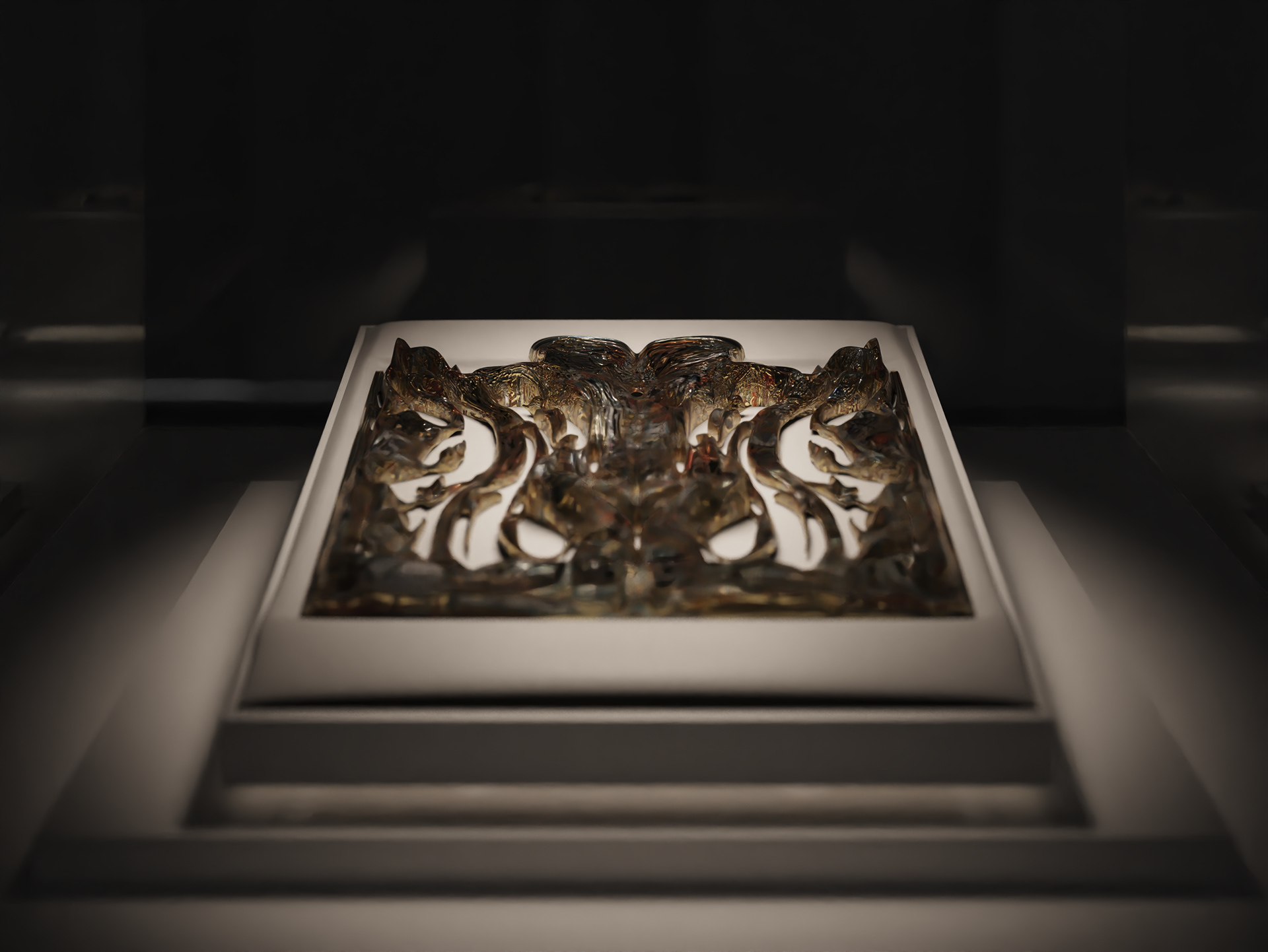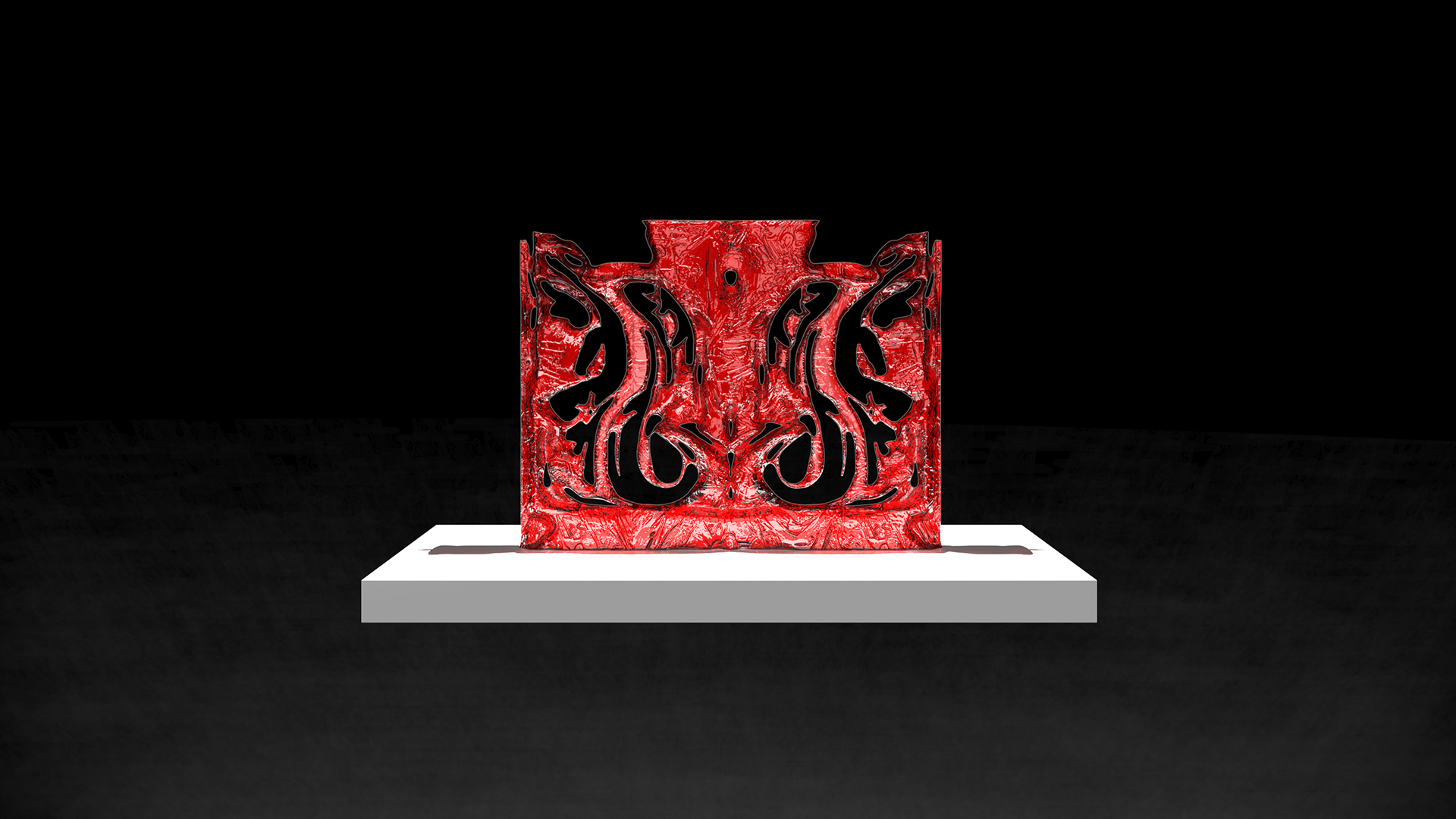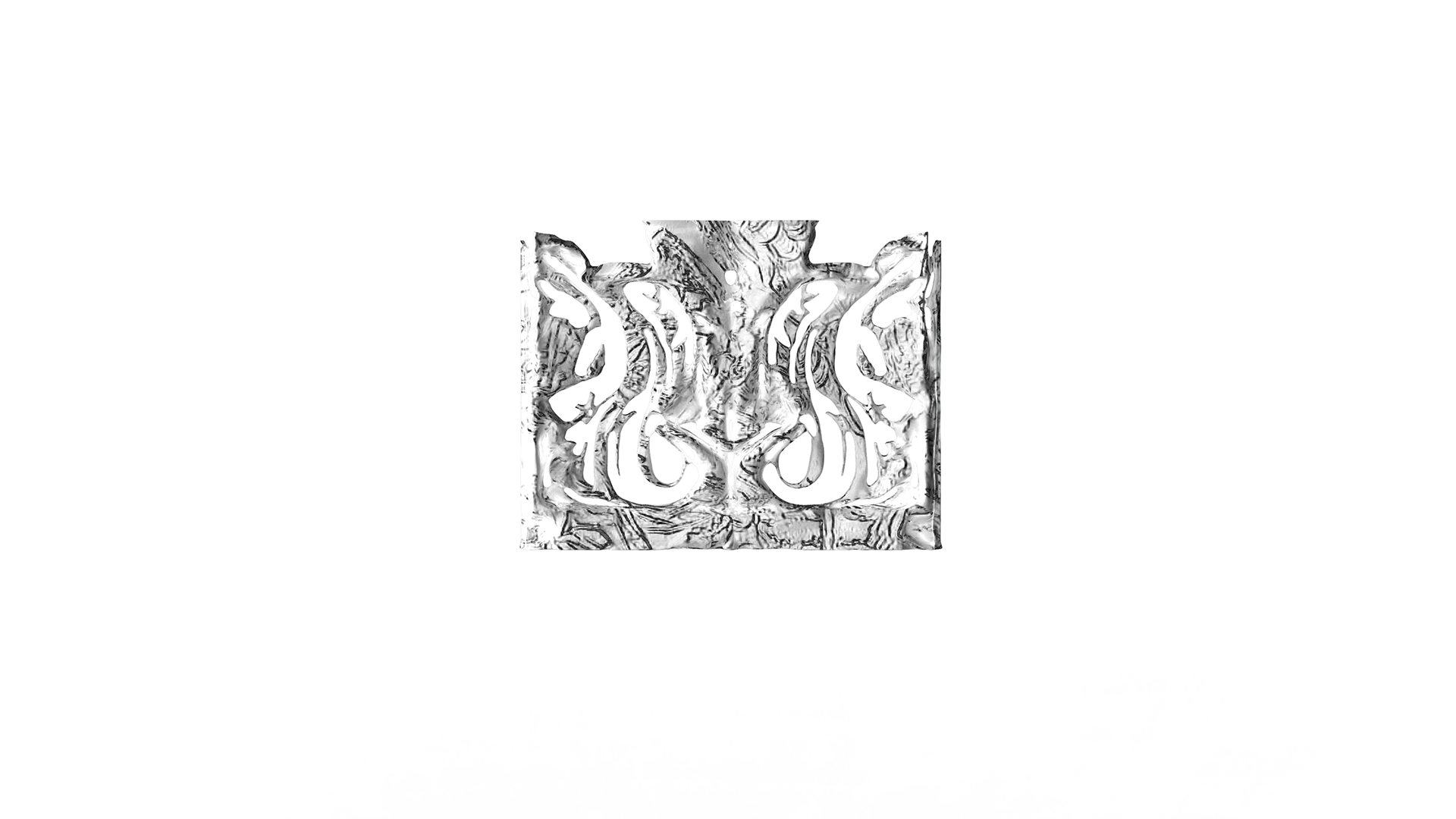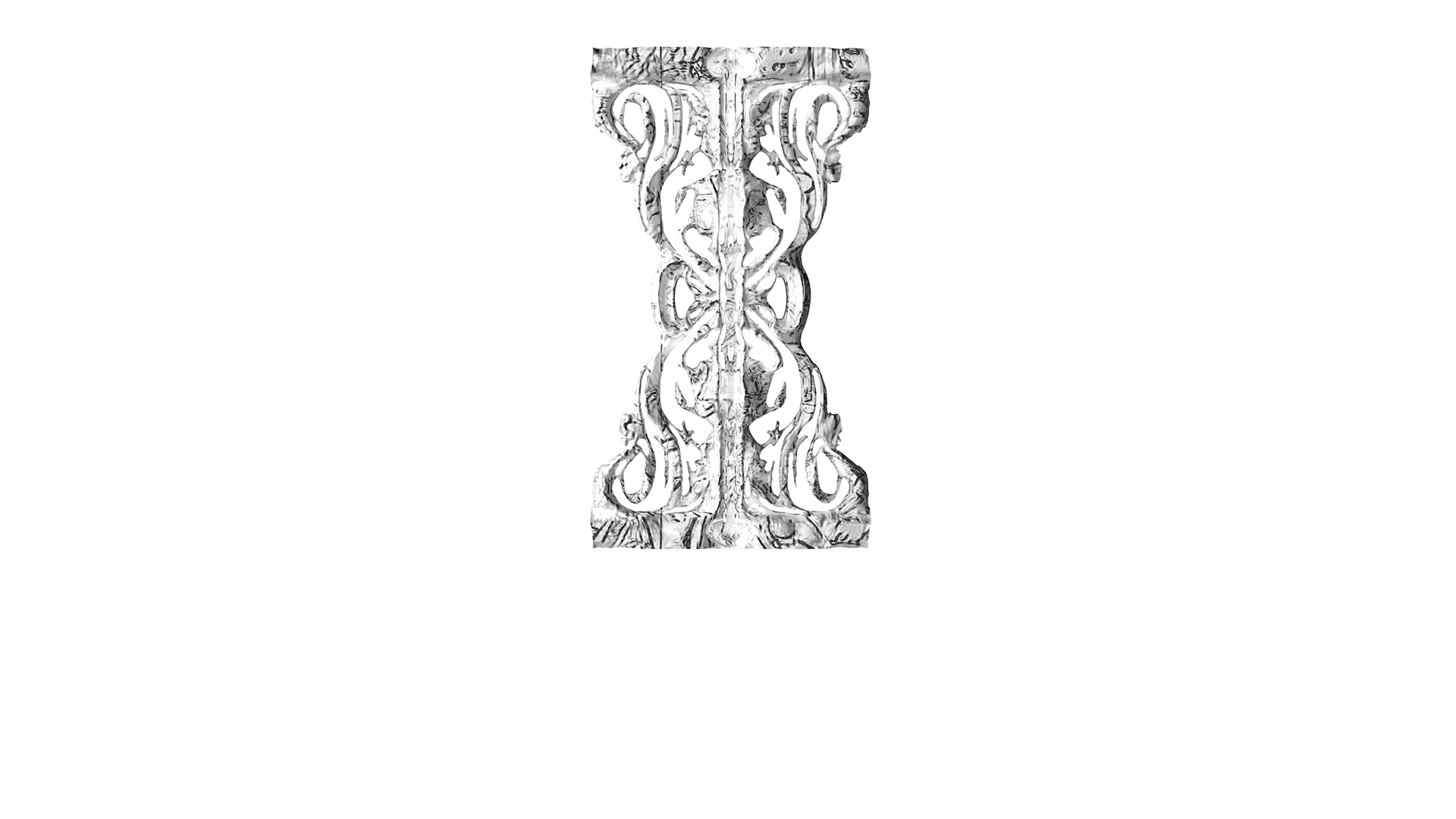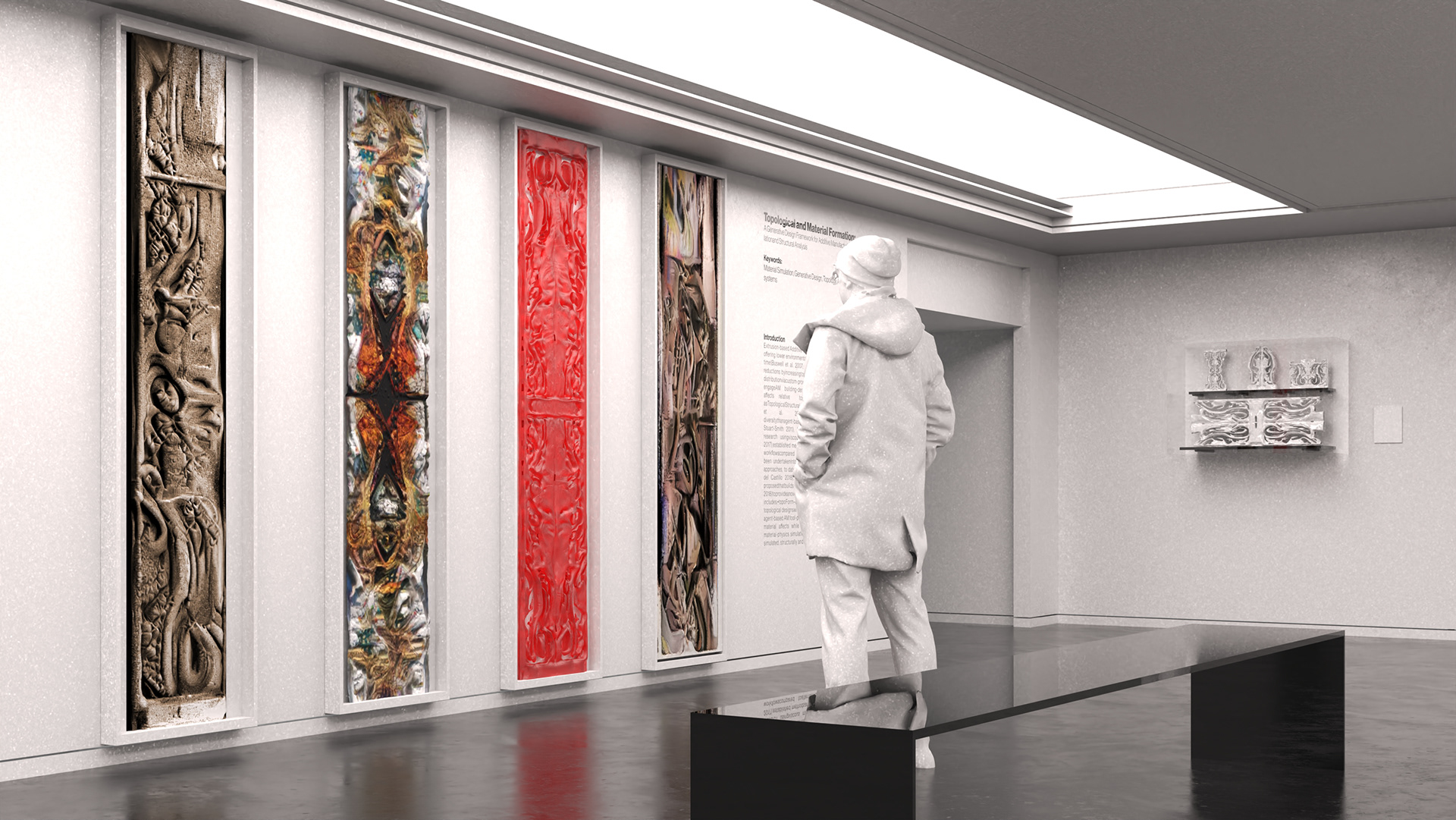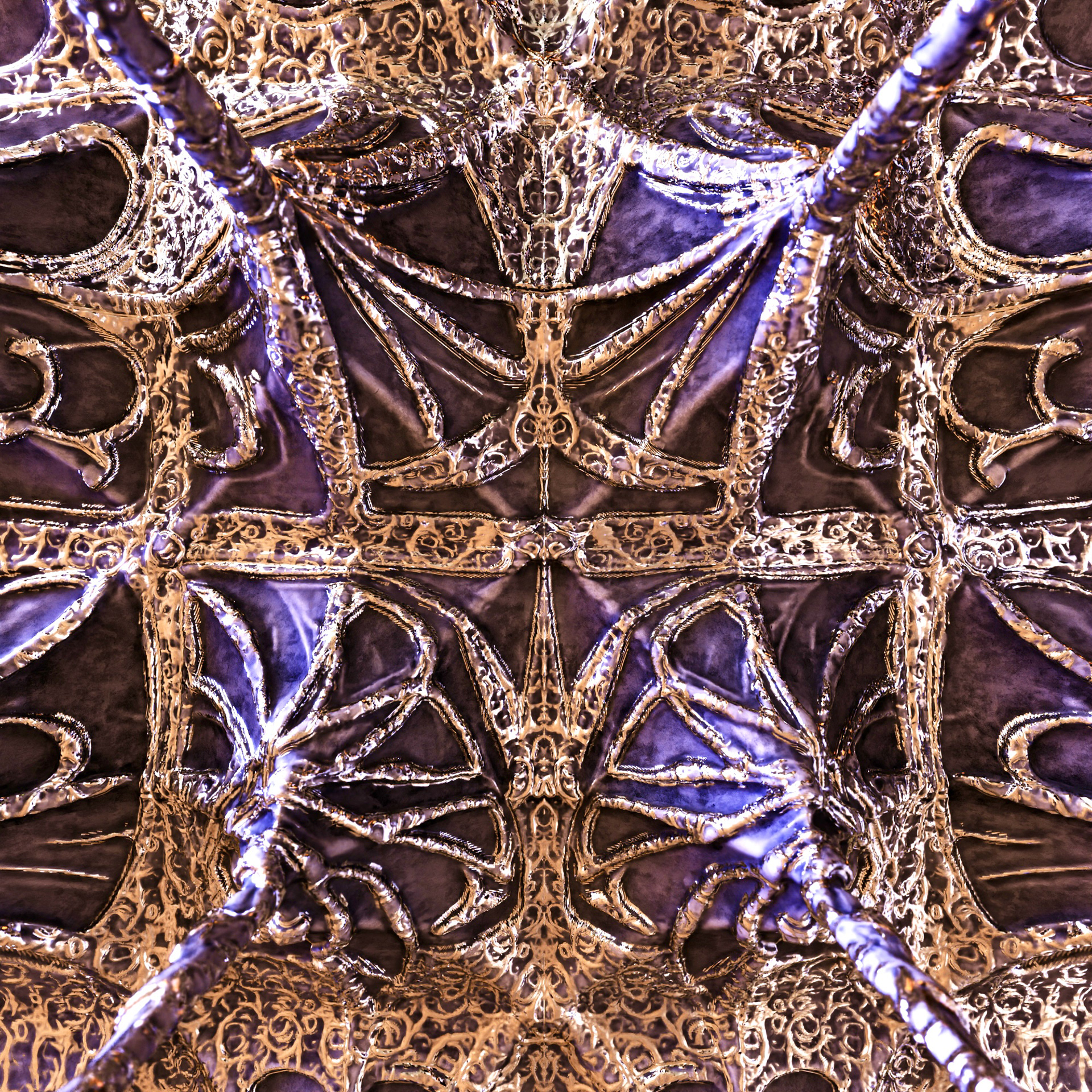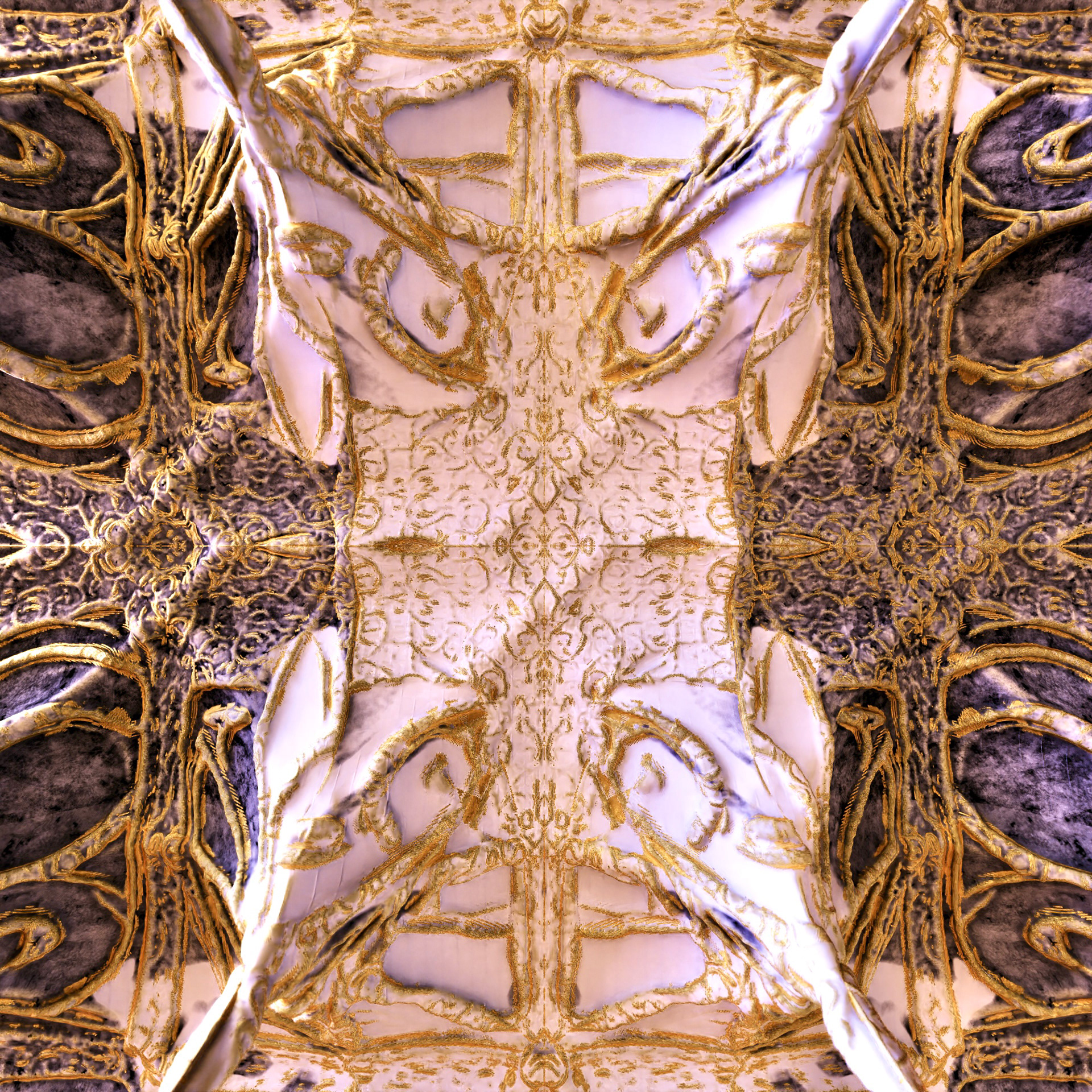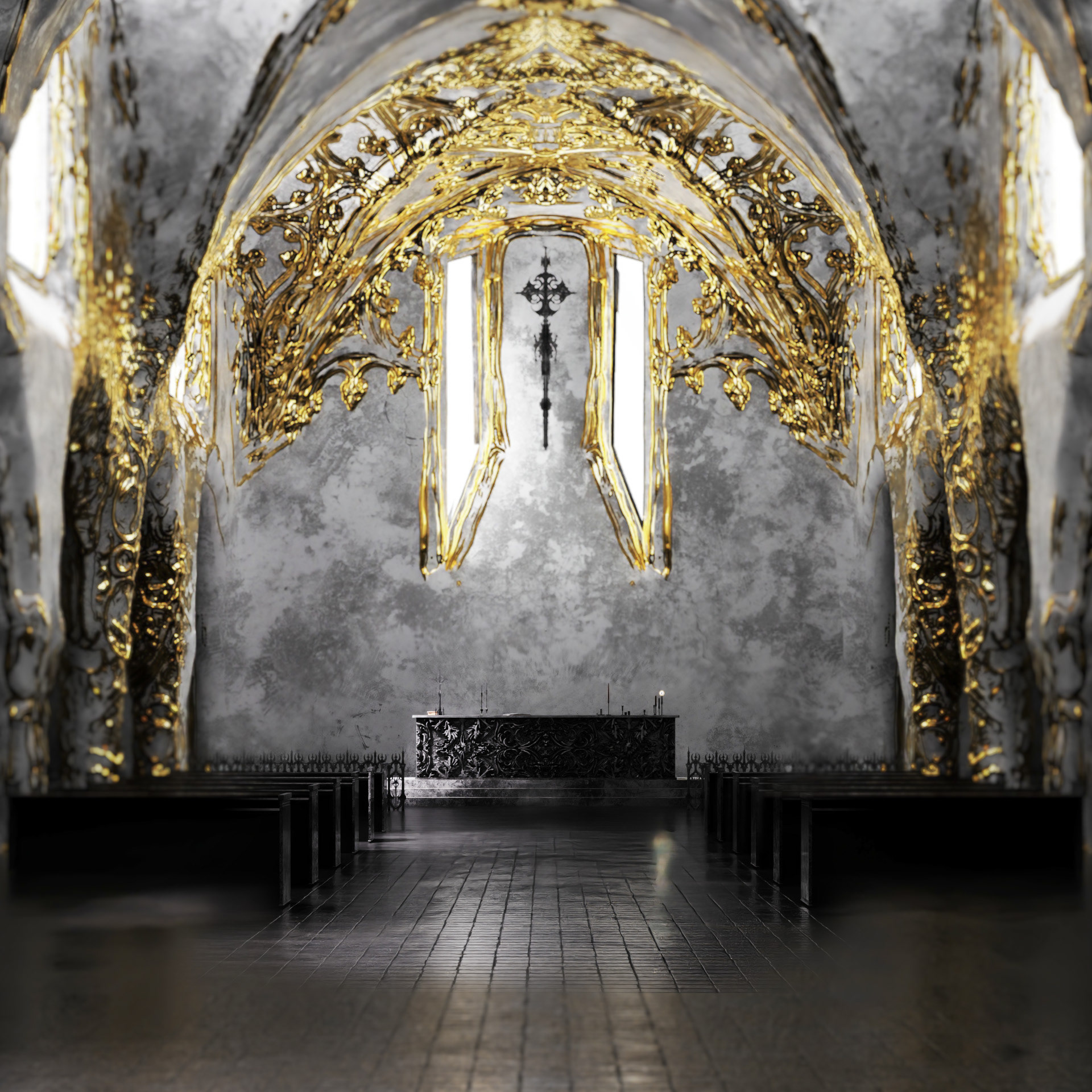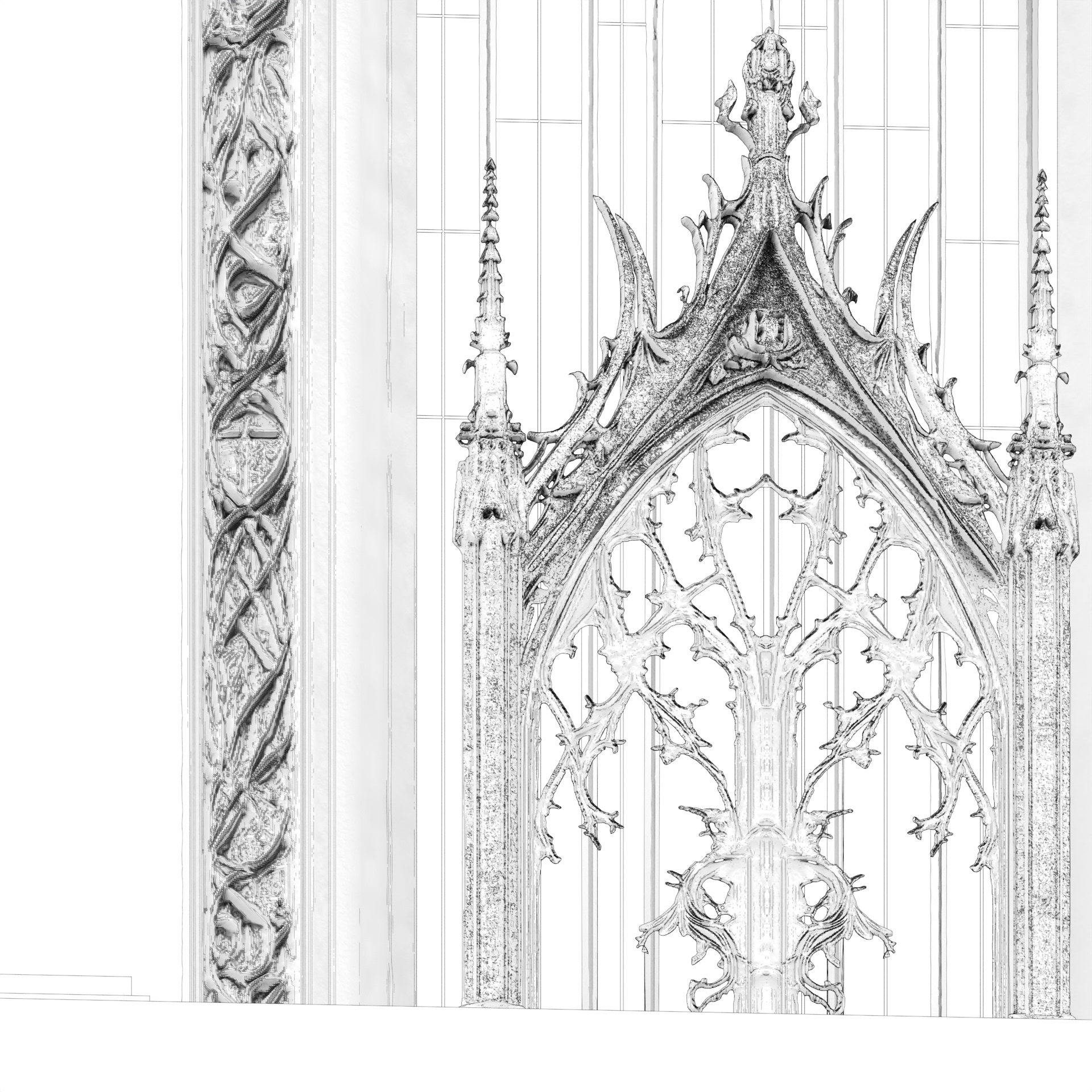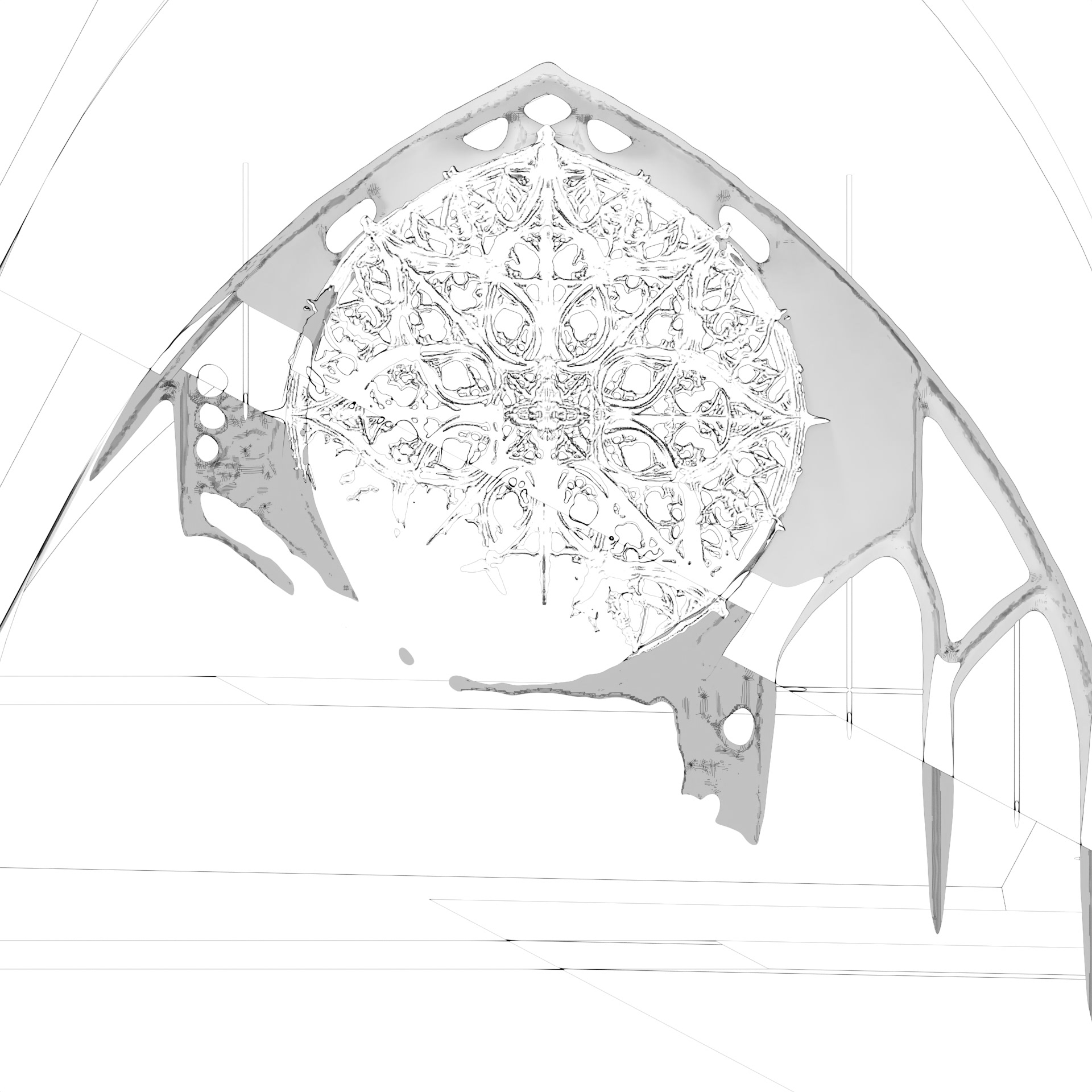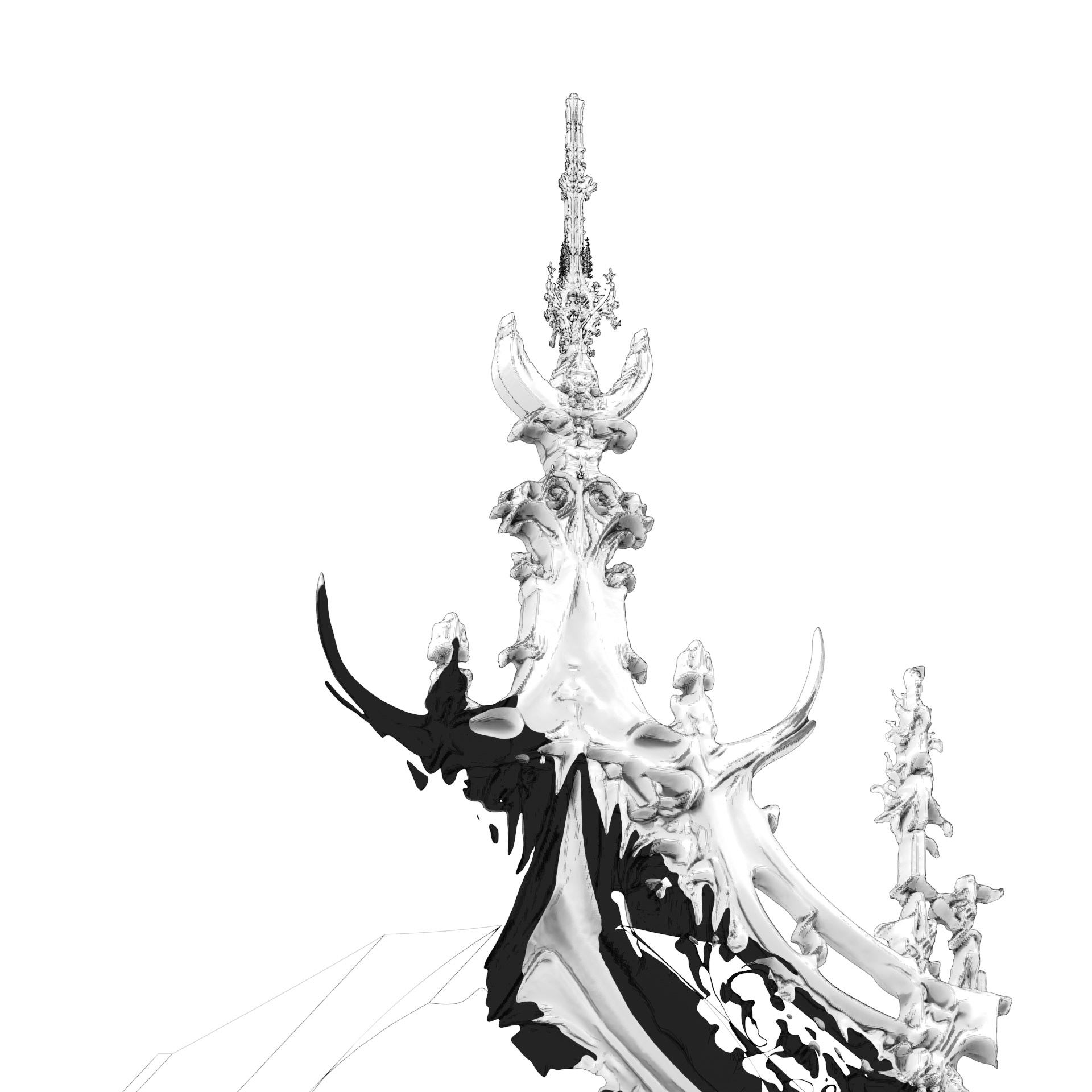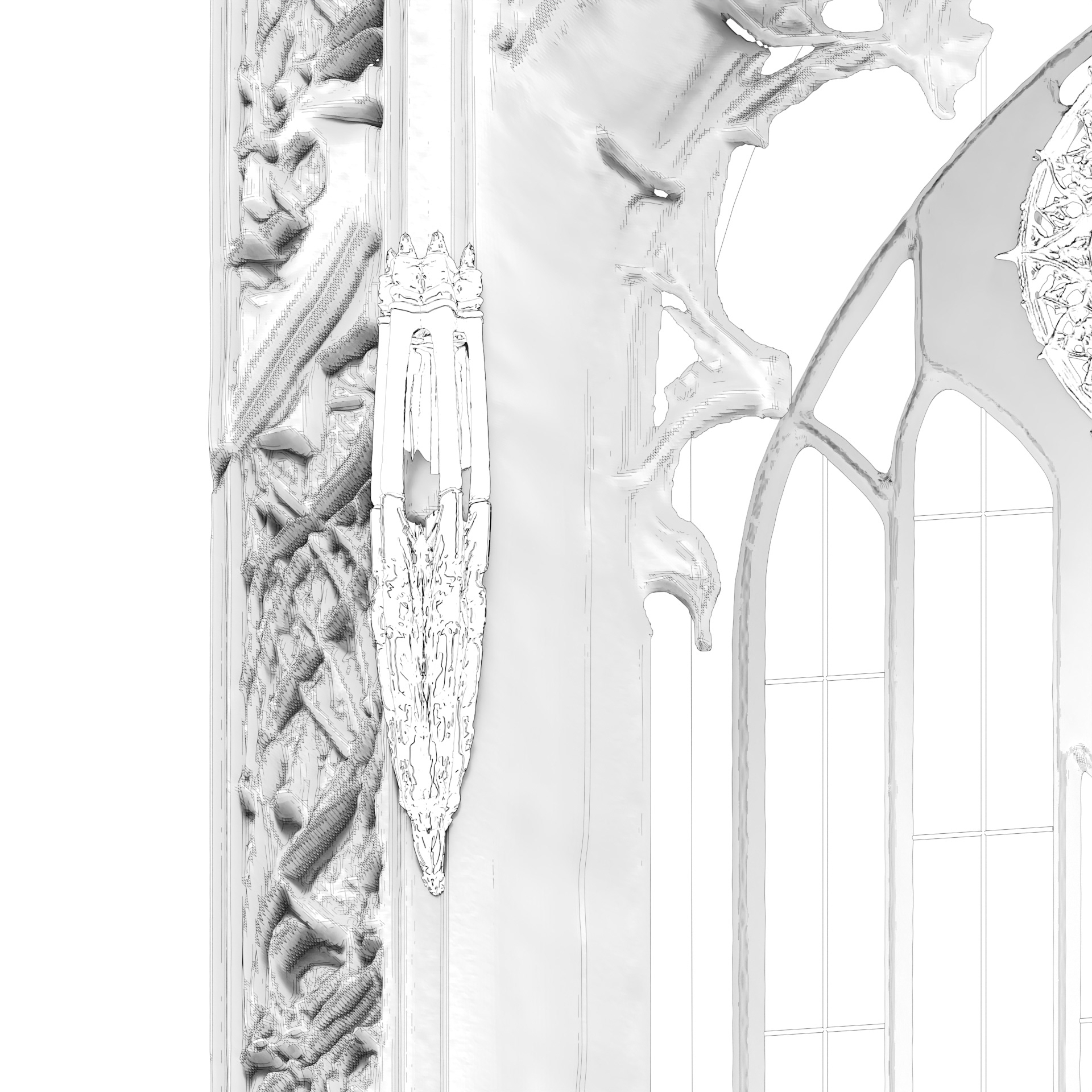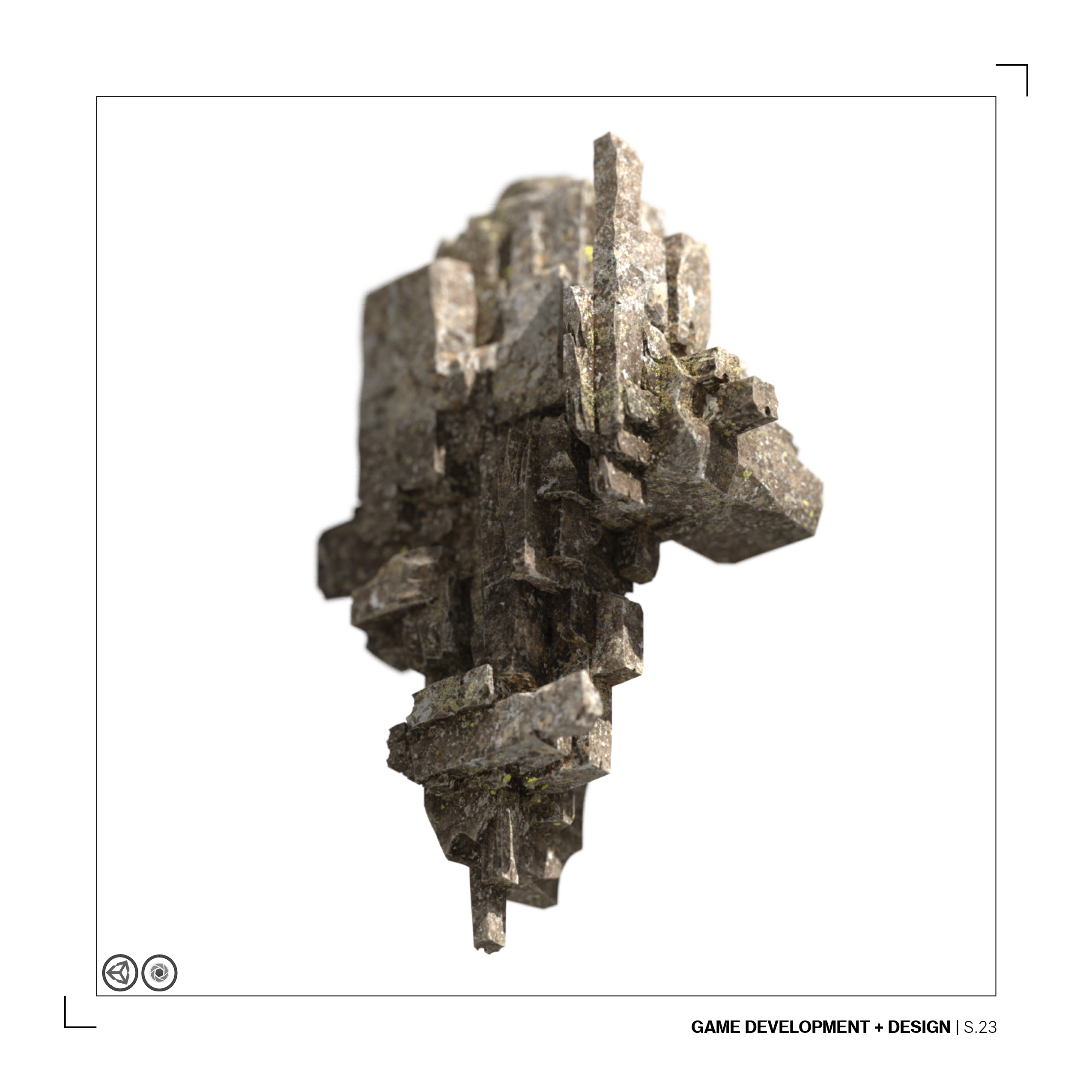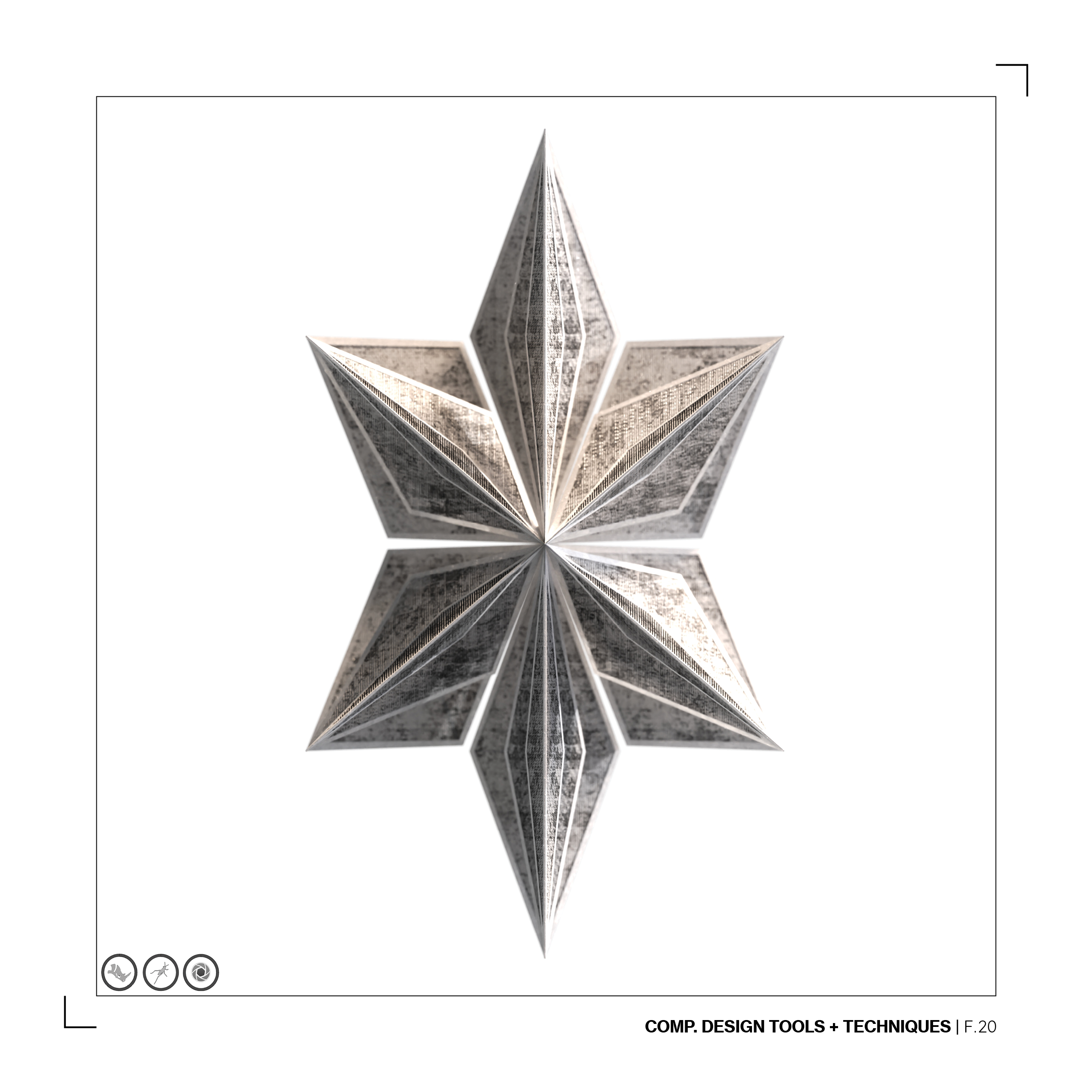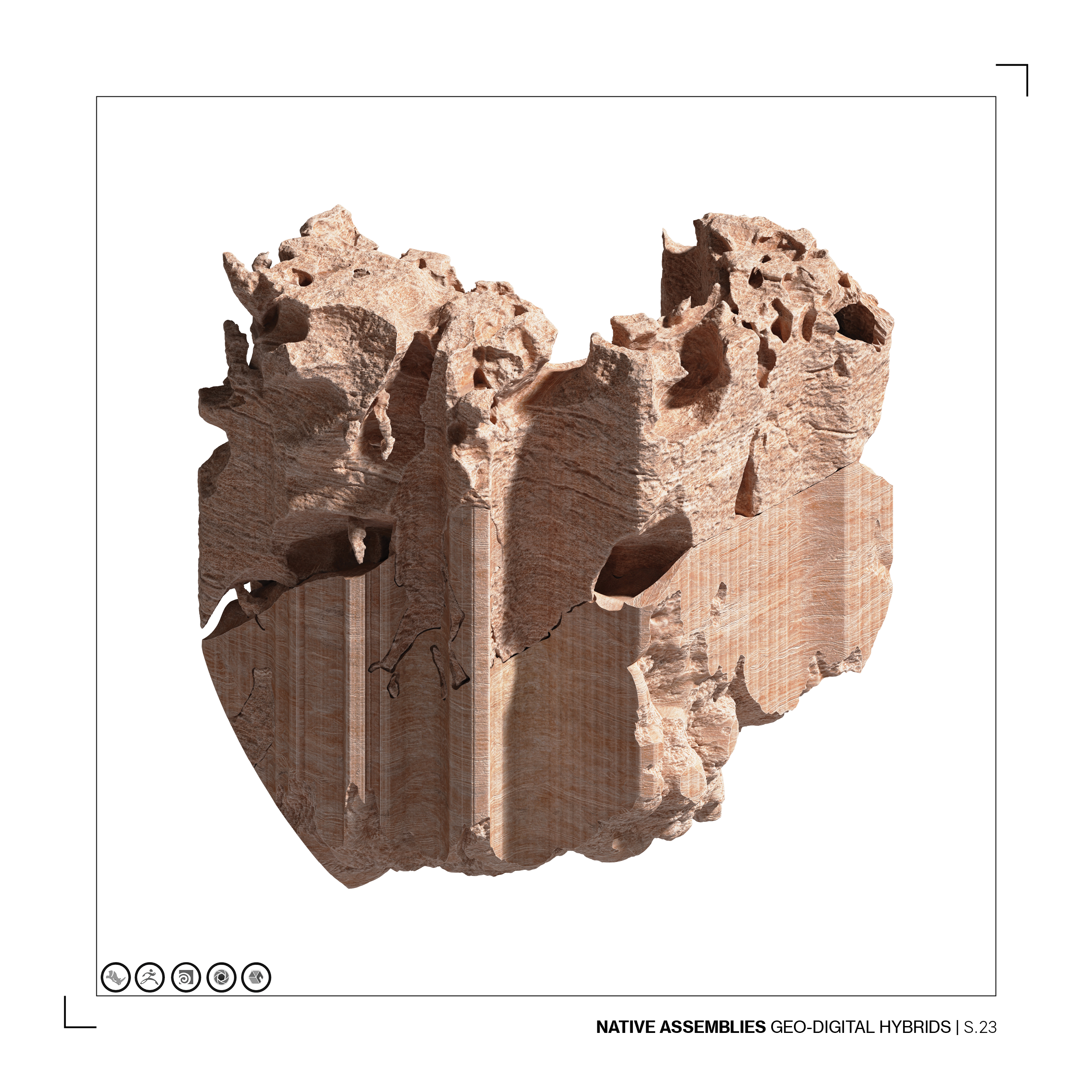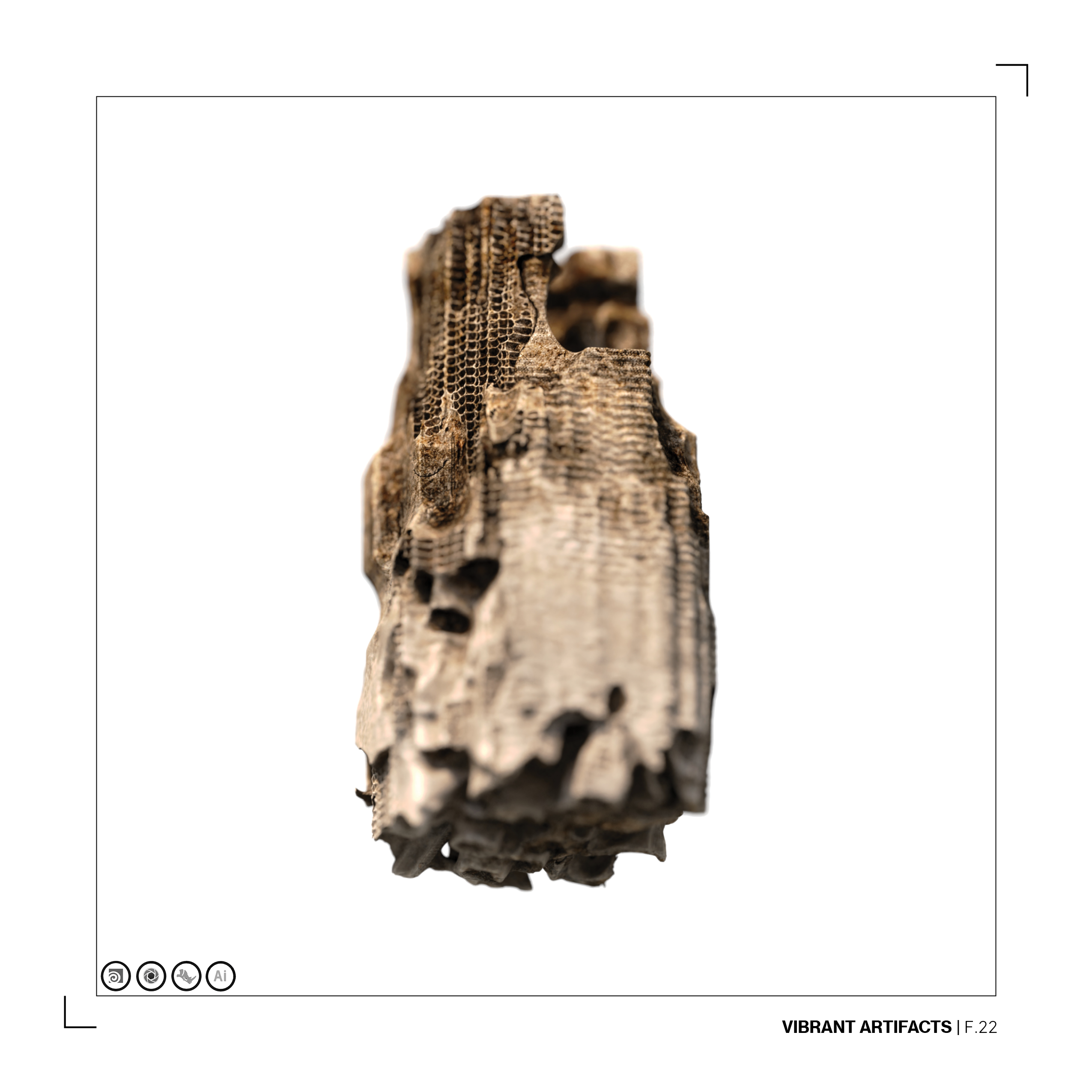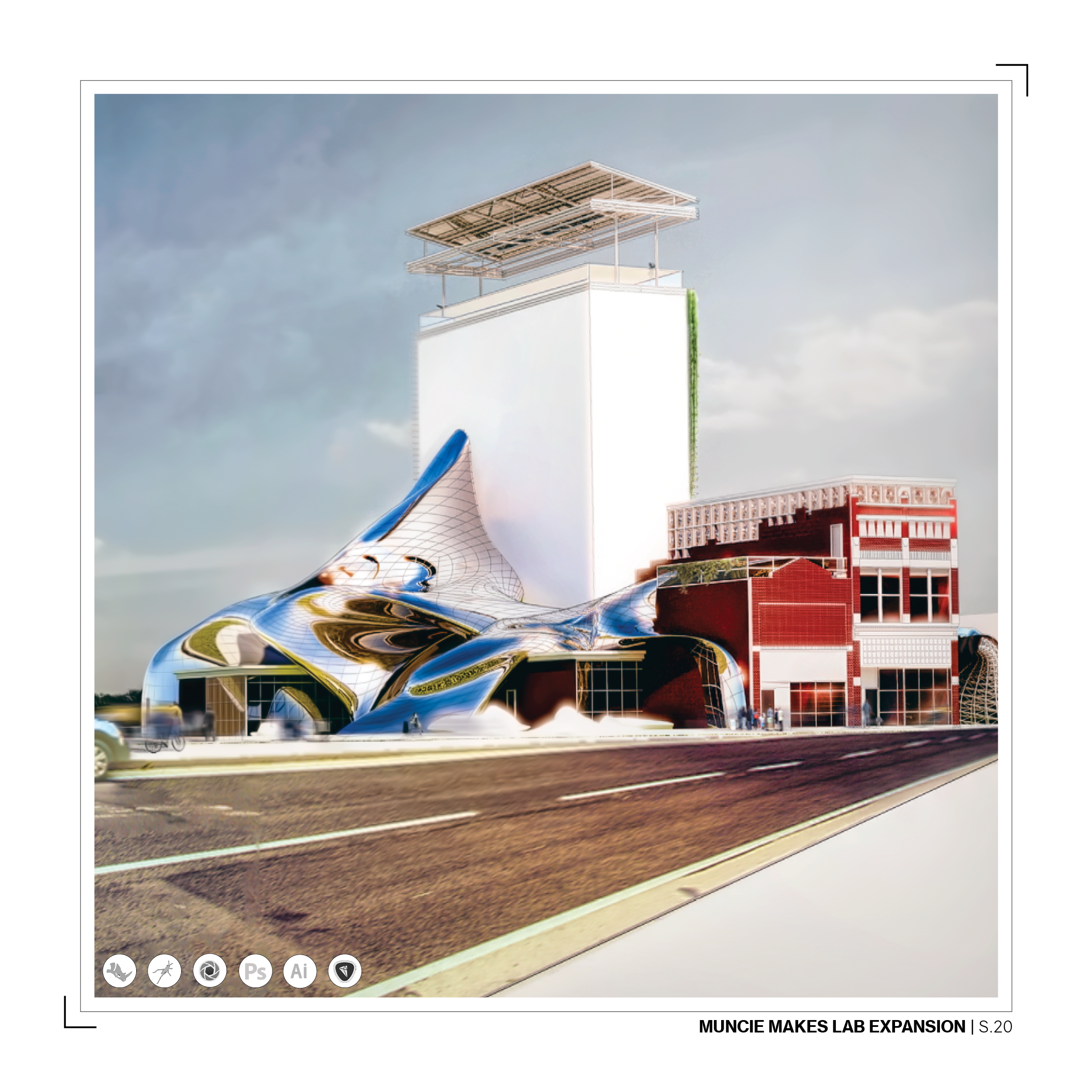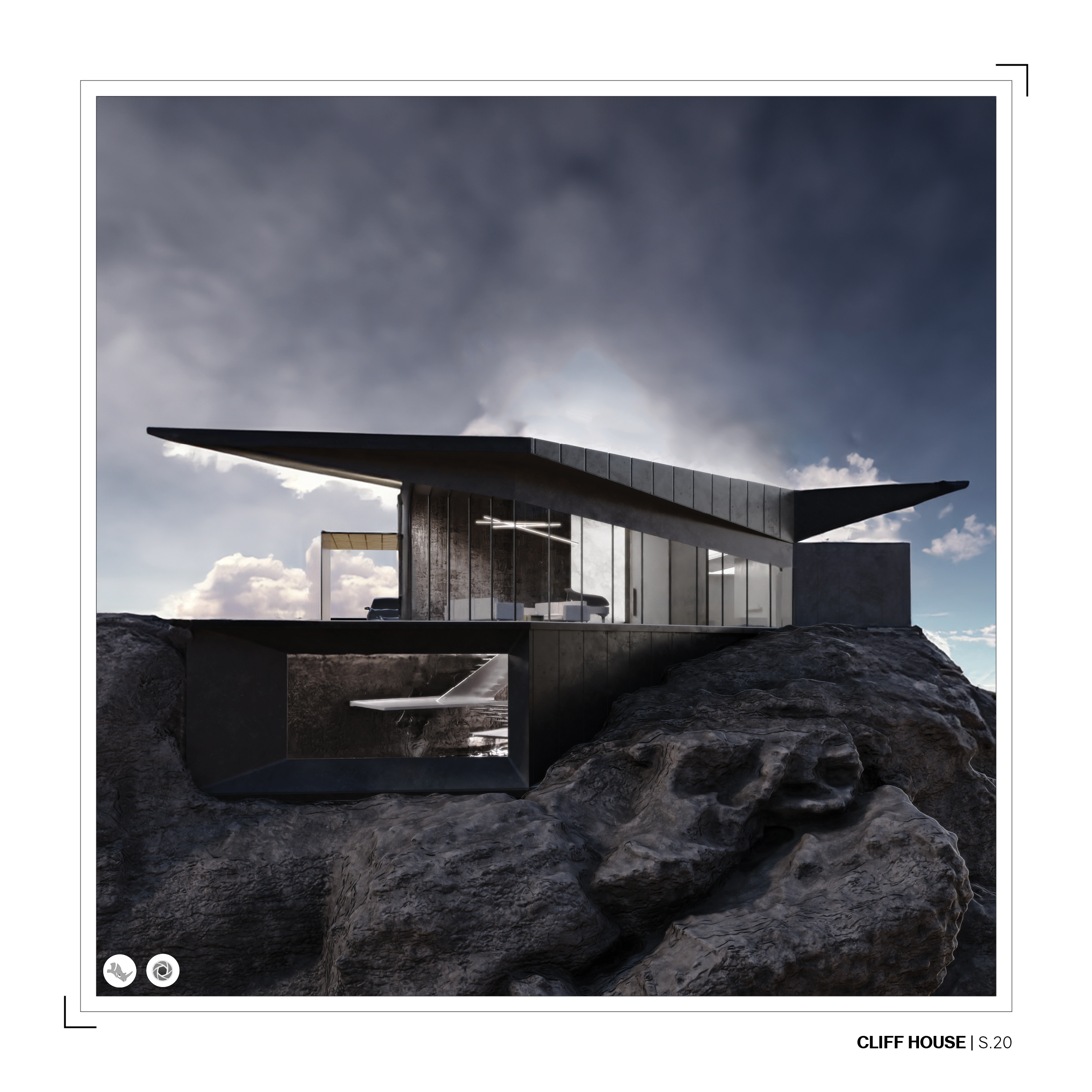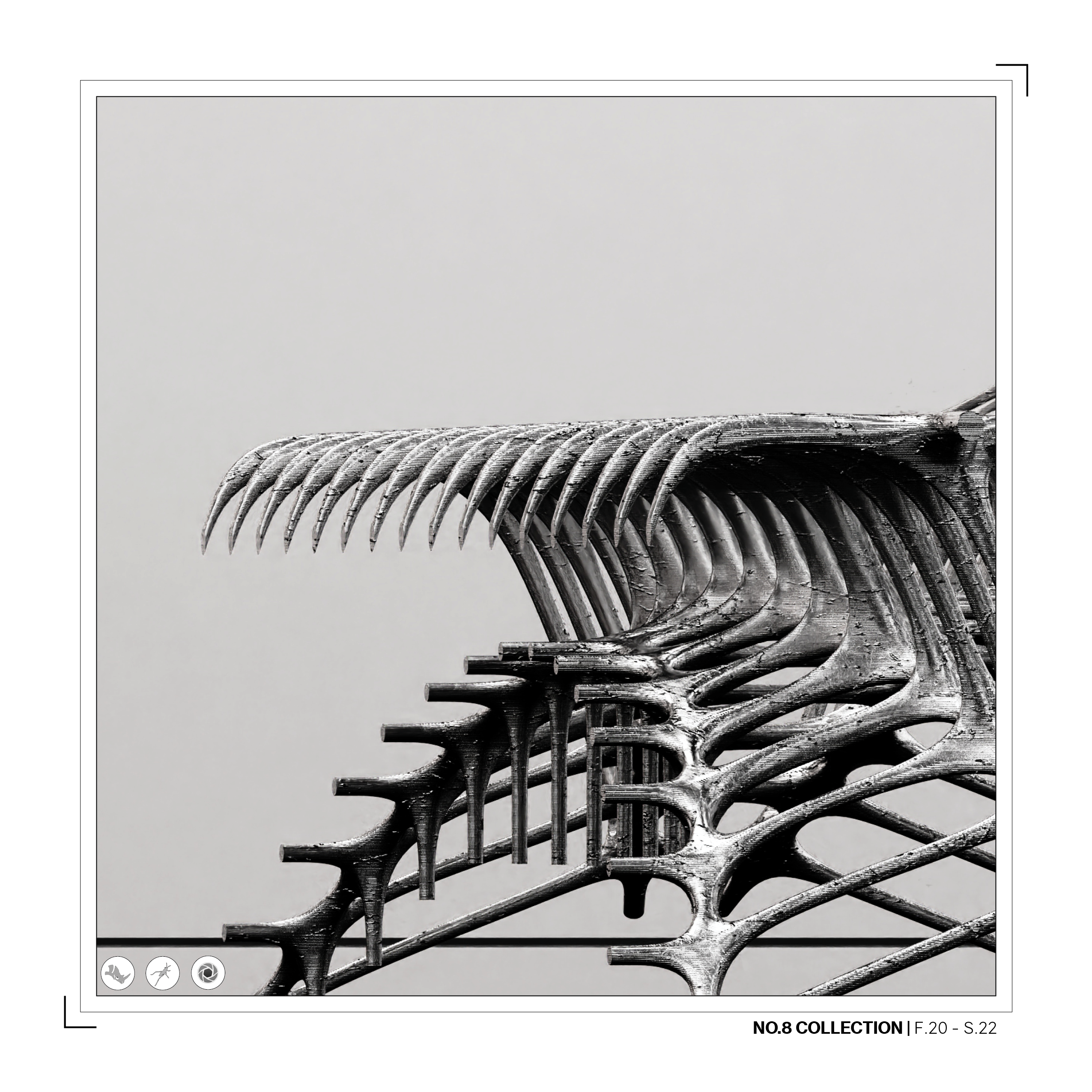MACHINED SEMIOTICS | ARCH583
“Veils are delicate and fragile. In the history of ornament there are many techniques that embody such qualities. . . Ruskin’s third way occupies a middle ground between structure and ornament [Like the Gothic]. . . It is not strong skeletal structure being draped with refined webs of textile, but structure becoming ornamental itself” - Lars Spybroek, The Sympathy of Things
This research-based elective aimed to address multiple scales of design by focusing on a range of topics from structural performance to iconography and systems of enclosure. The course utilized software applications like Reality Capture, Meshroom, and or Polycam for 3D Scanning of selected historical facades. The scanned artifacts were then interpreted as the bases for our design development and engagement throughout the course. Students were then introduced to OpenCV in Google Colab for image segmentation as a means of visual analysis and discretization to parts, followed with tutorials on Diffusion AI Models in Google Collab, Rhino3D for Nurbs Modelling, and ZBrush for Advanced Mesh Modelling workflows. The work provided explores topics of historical context, form, and structure using computational design workflows in parallel with integration of optional programmatic requirements and building systems. Innovative material developments were encouraged throughout the semester and so was the utilization of 2D image-based machine learning toolkits to develop tectonic expression and structural solutions. Throughout the course students were asked to rebuild these speculum facade objects and to study their newly found representations through the lens of speculative realist philosophies and ‘Object Oriented Ontology’. As a result of continuous research and mediating between the perspectives of an architectural historian and the contemporary artist, the final theoretical output of this project attempted to provide a contemporary outlook on gothic architecture, and how its seemingly simple method of design could be reinterpreted and or superimposed with today’s modern machine learning and structural engineering tools.

